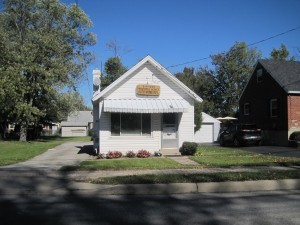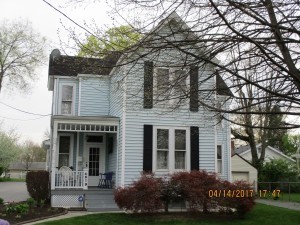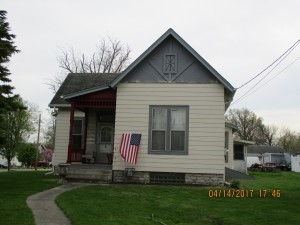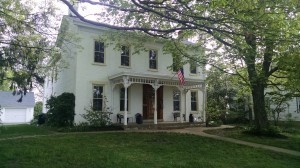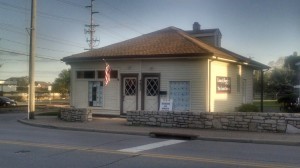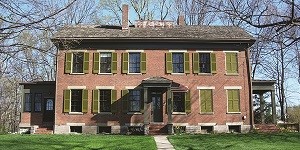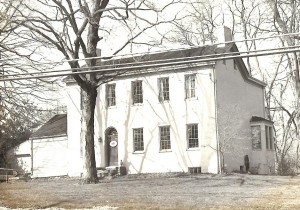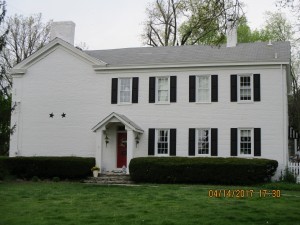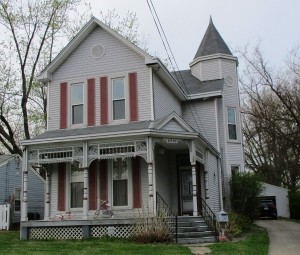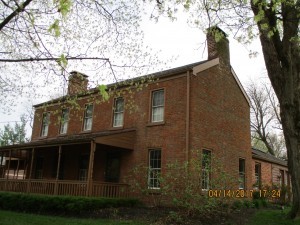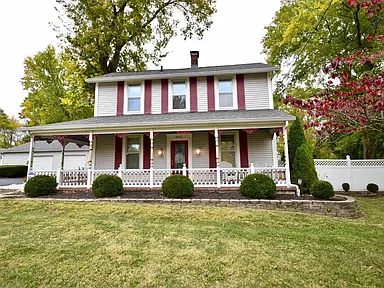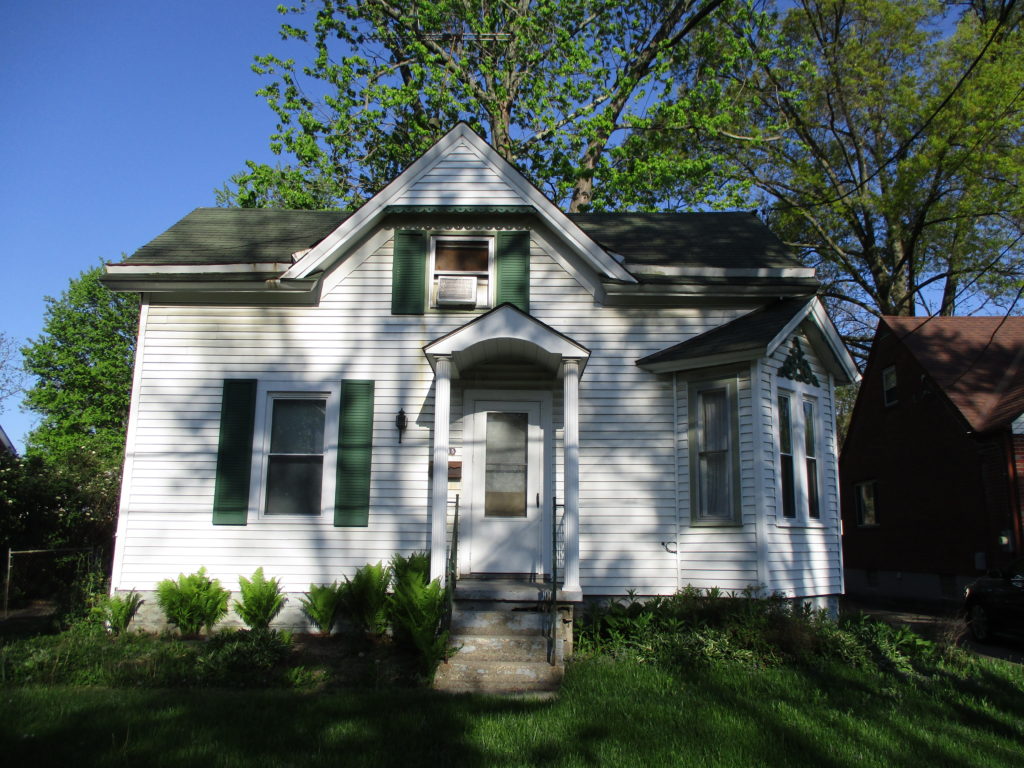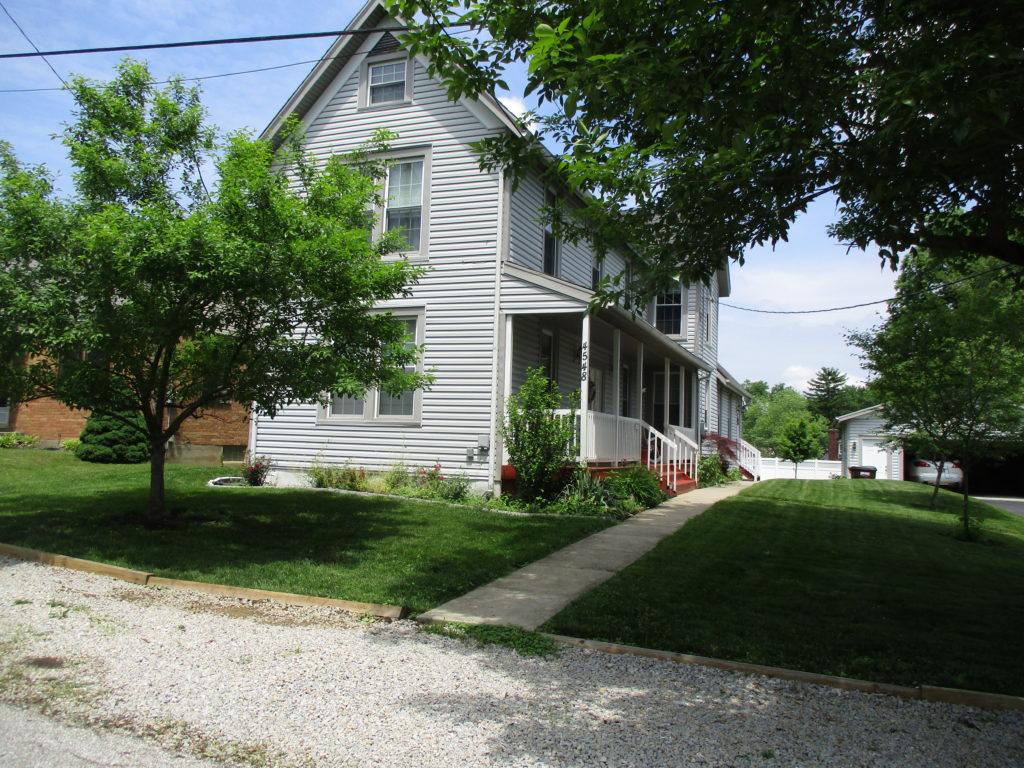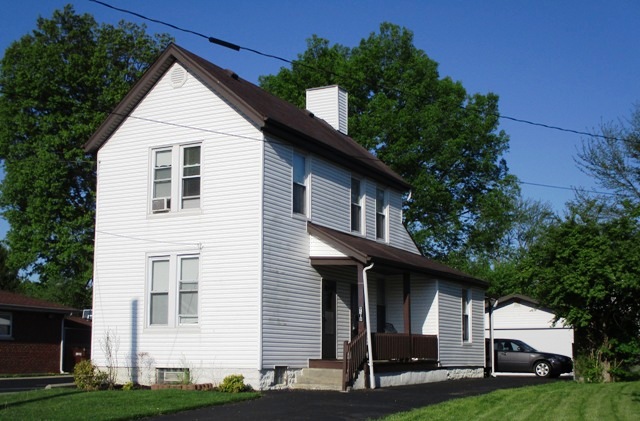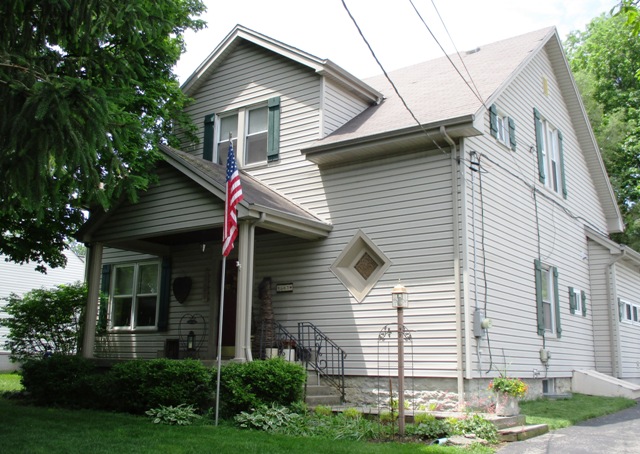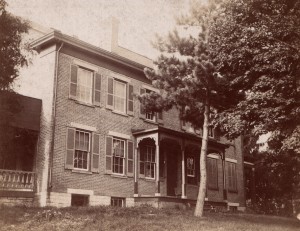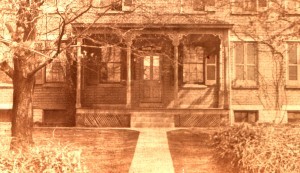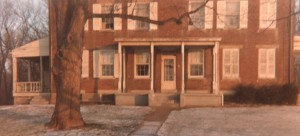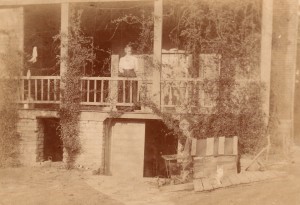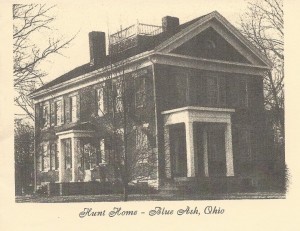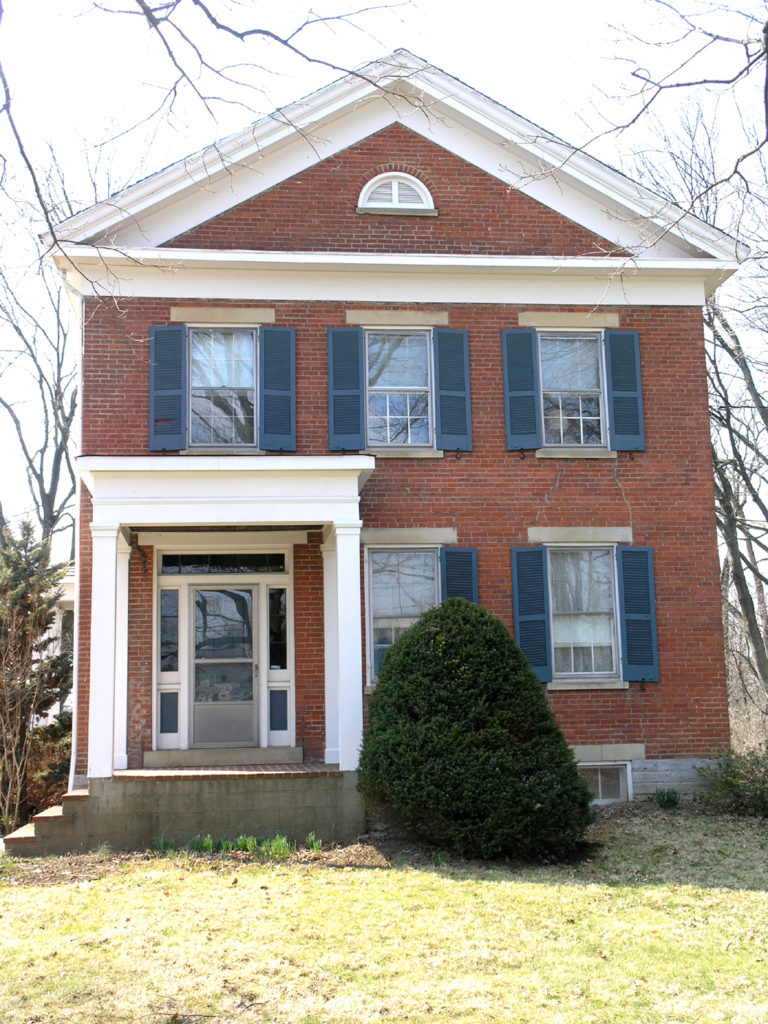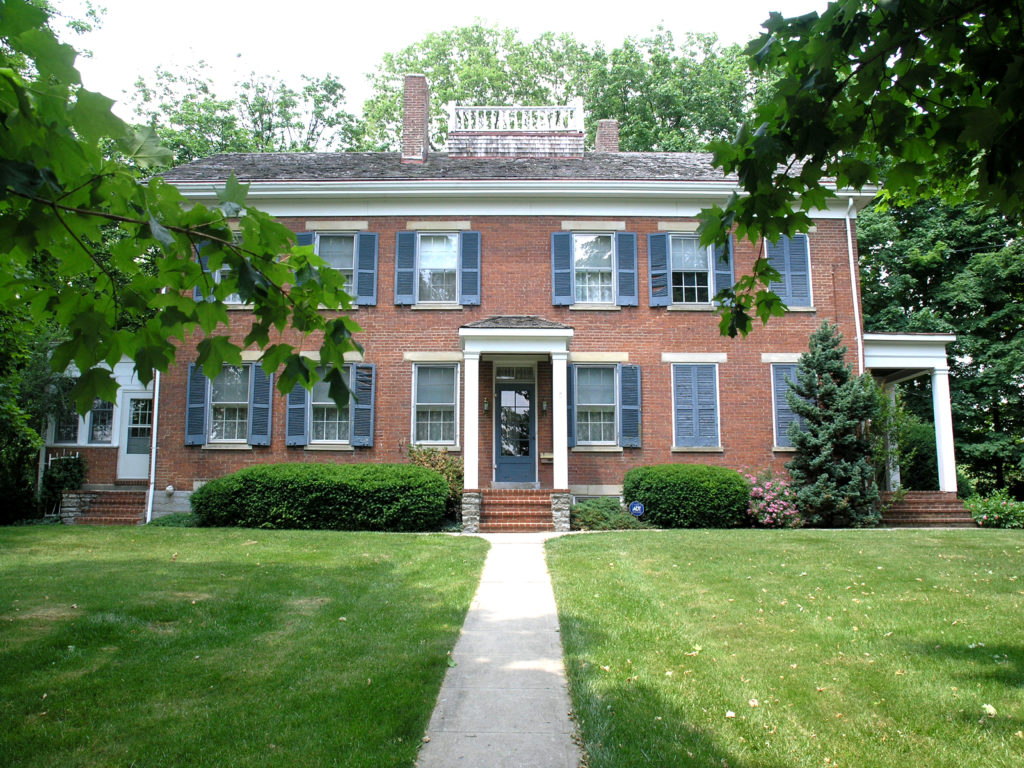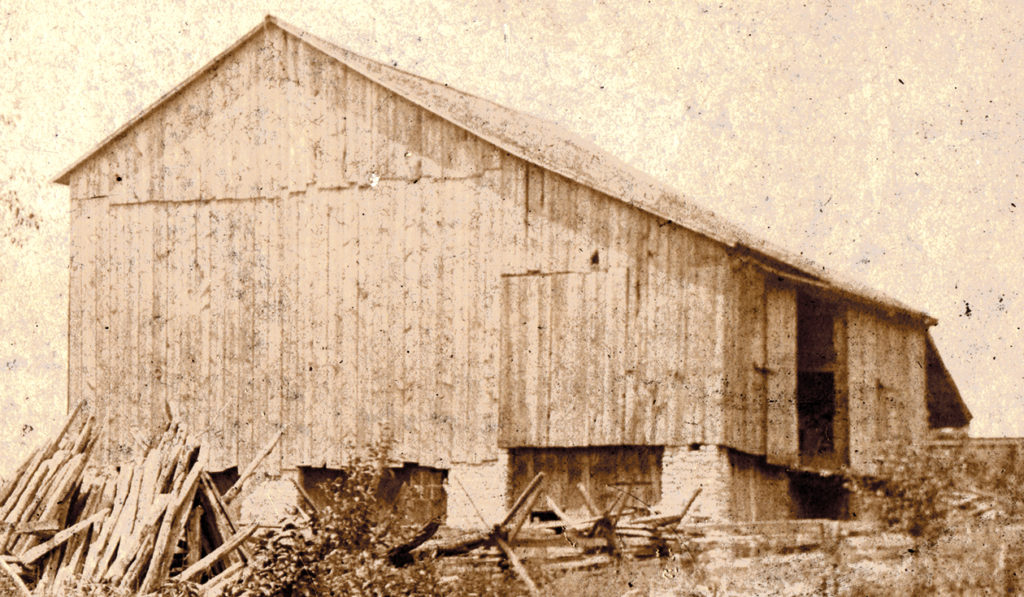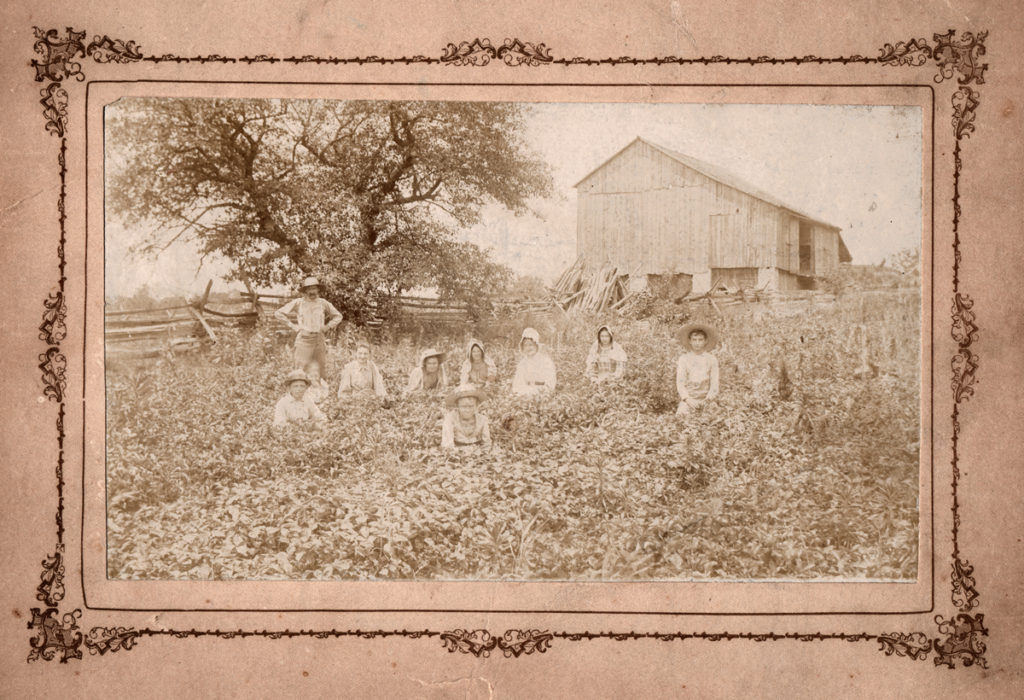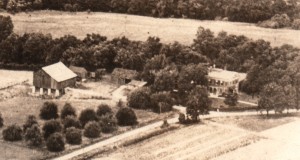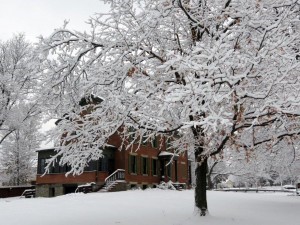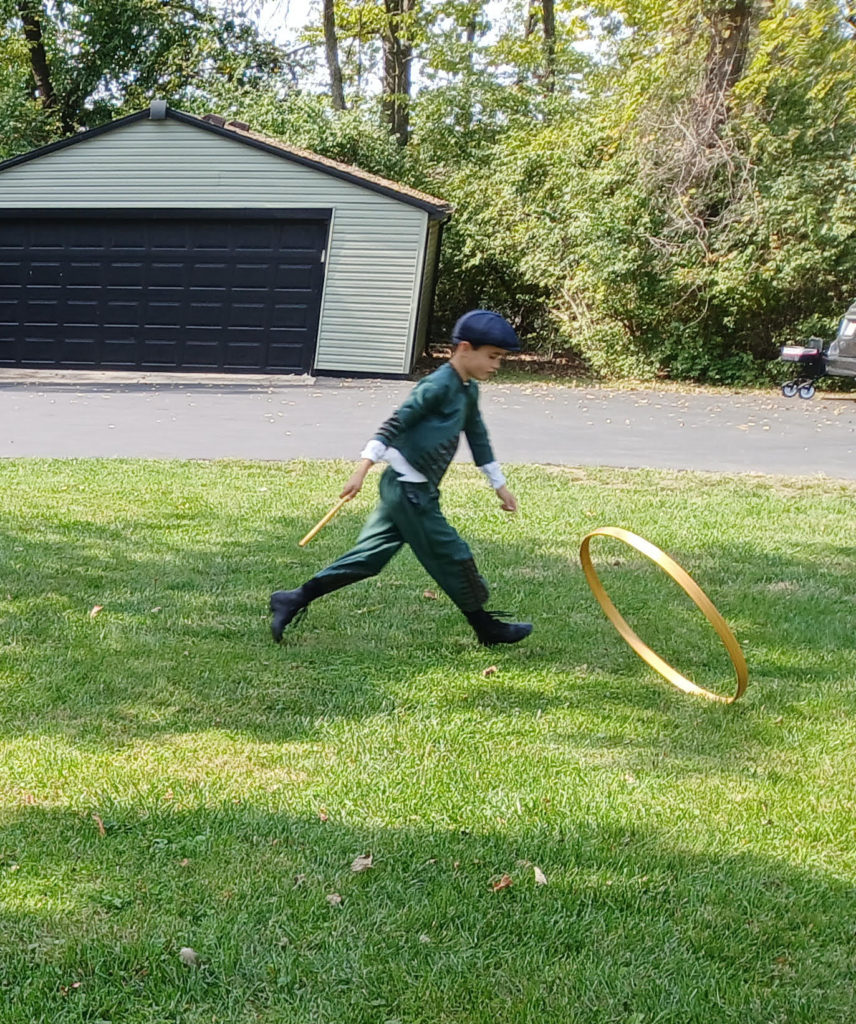
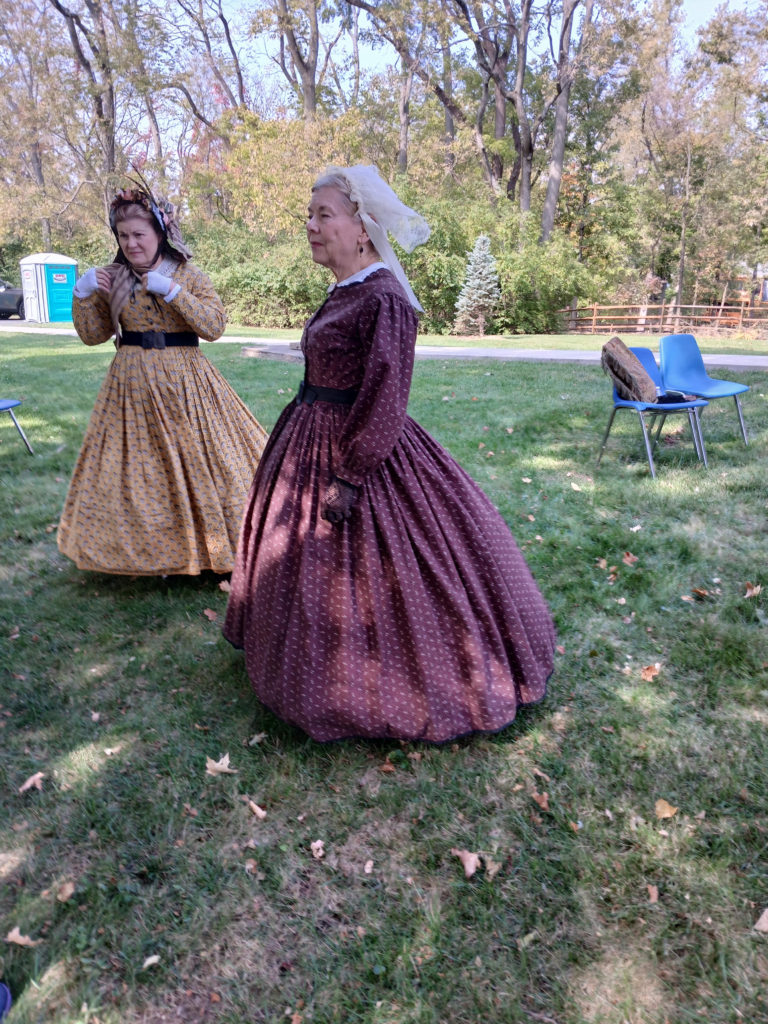
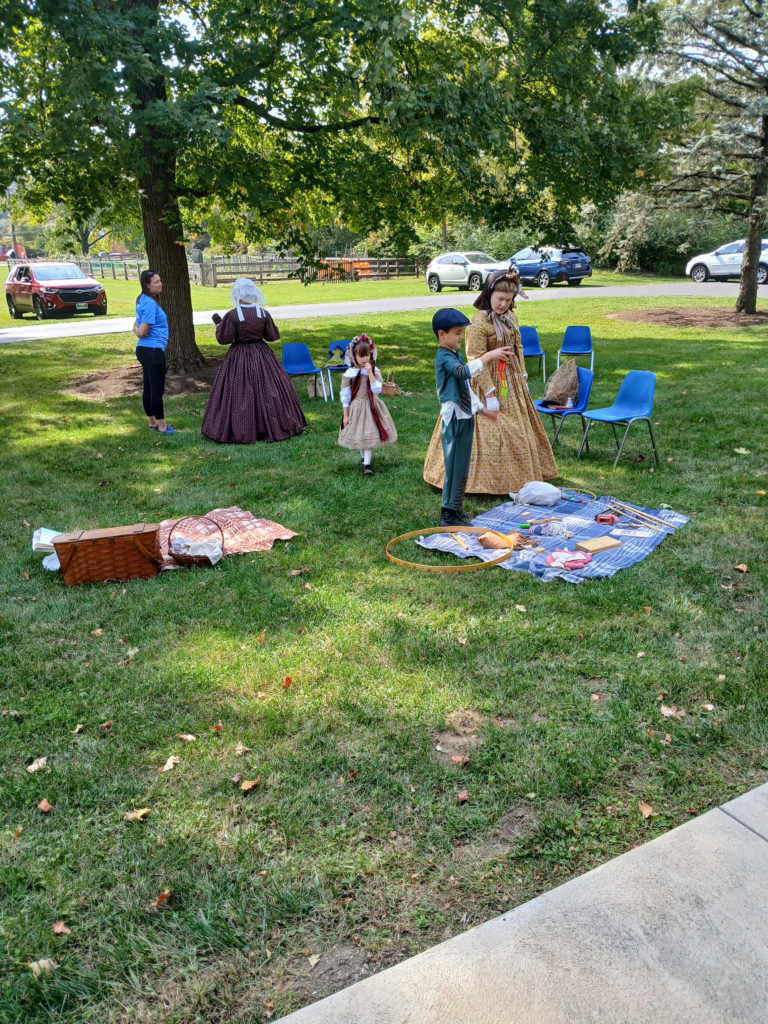
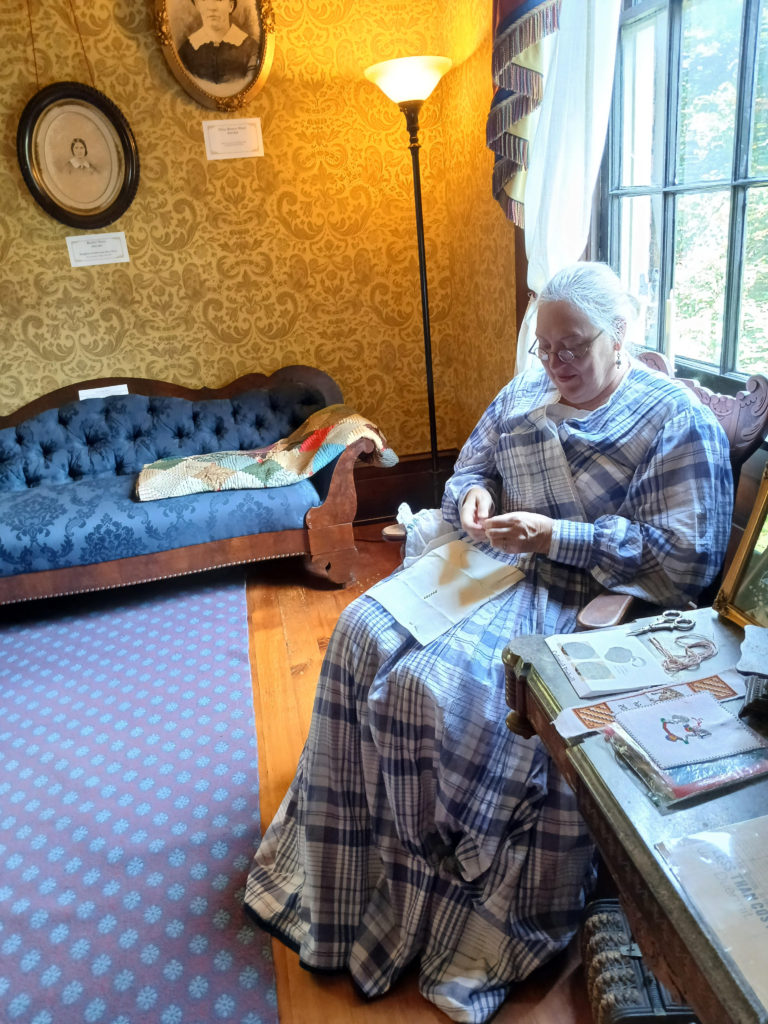
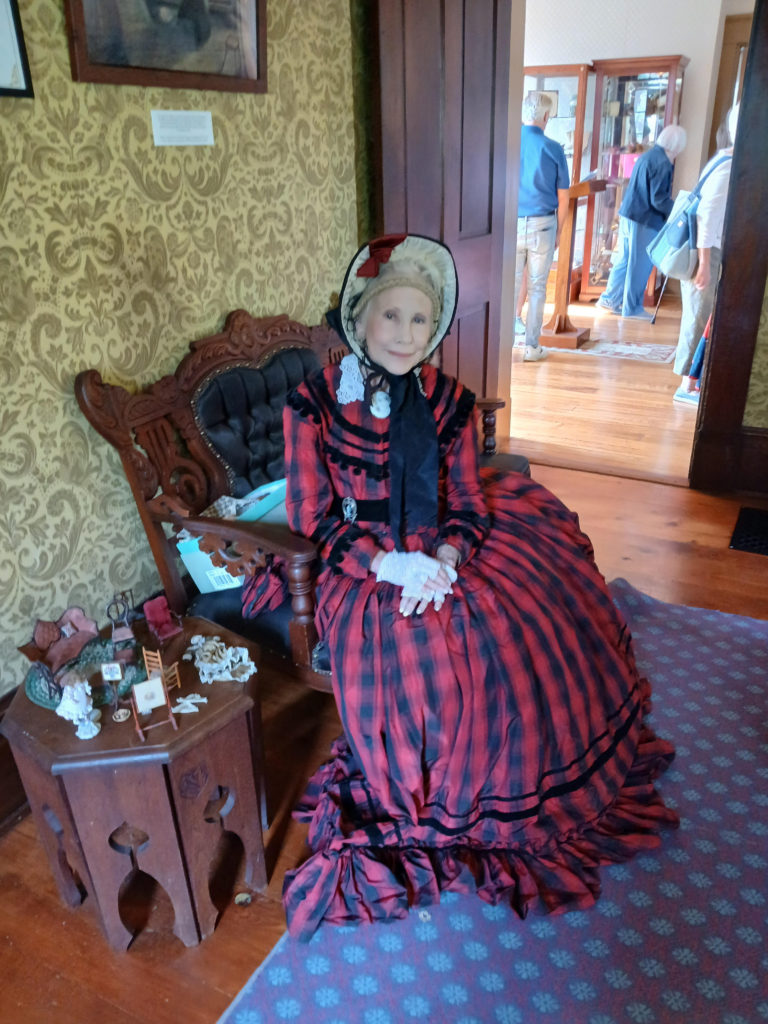
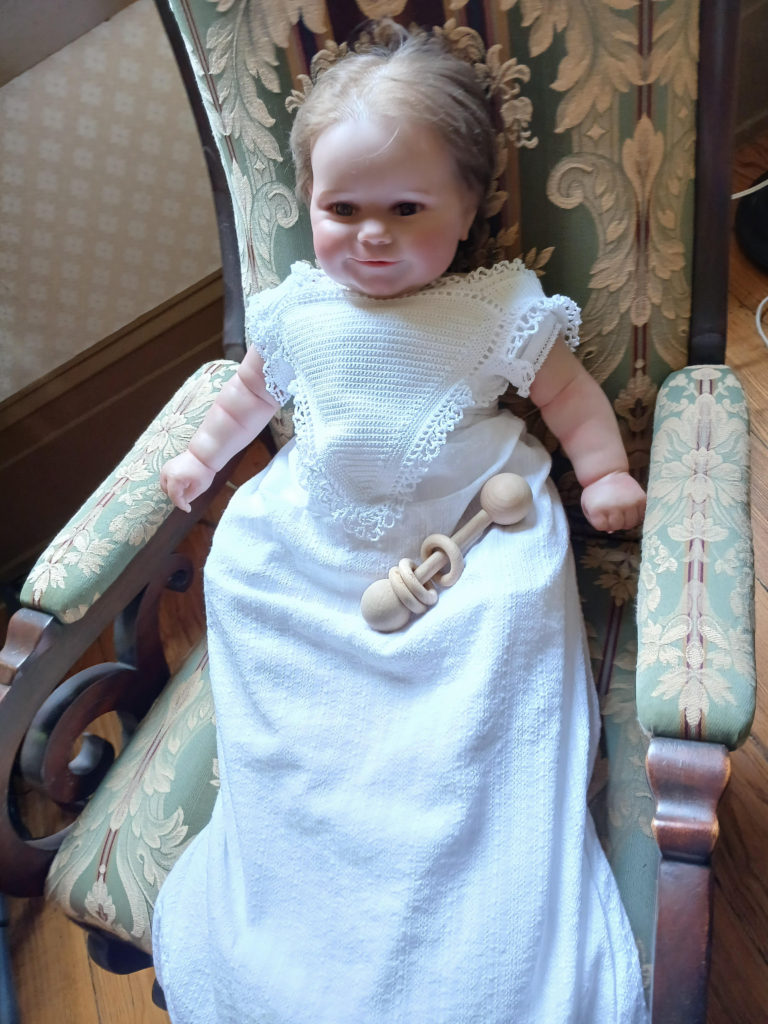
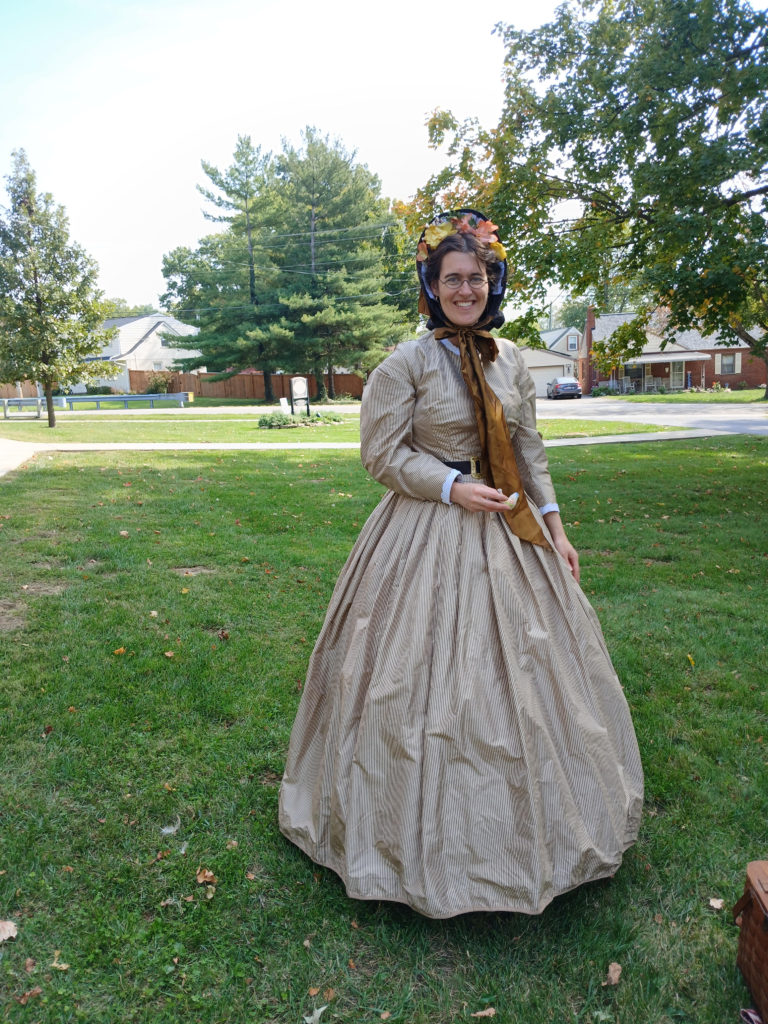
Our open house featured Civil War
reenactors from the Ohio Valley Civil War
Association in honor of four Civil War soldiers
buried at the Carpenter Run Pioneer Cemetery:
Judson German (1847-1874) 4th Regiment,
Ohio Cavalry; Thomas Long (1835-1895) 197th
Regiment, Ohio Infantry; Price Thompson
(1840-1901) 82nd Regiment, Ohio Infantry; and
Vesper Thompson (1831-1917) 138th Regiment,
Ohio Infantry. Displays and tents were set
up to duplicate the conditions soldiers had to contend with.
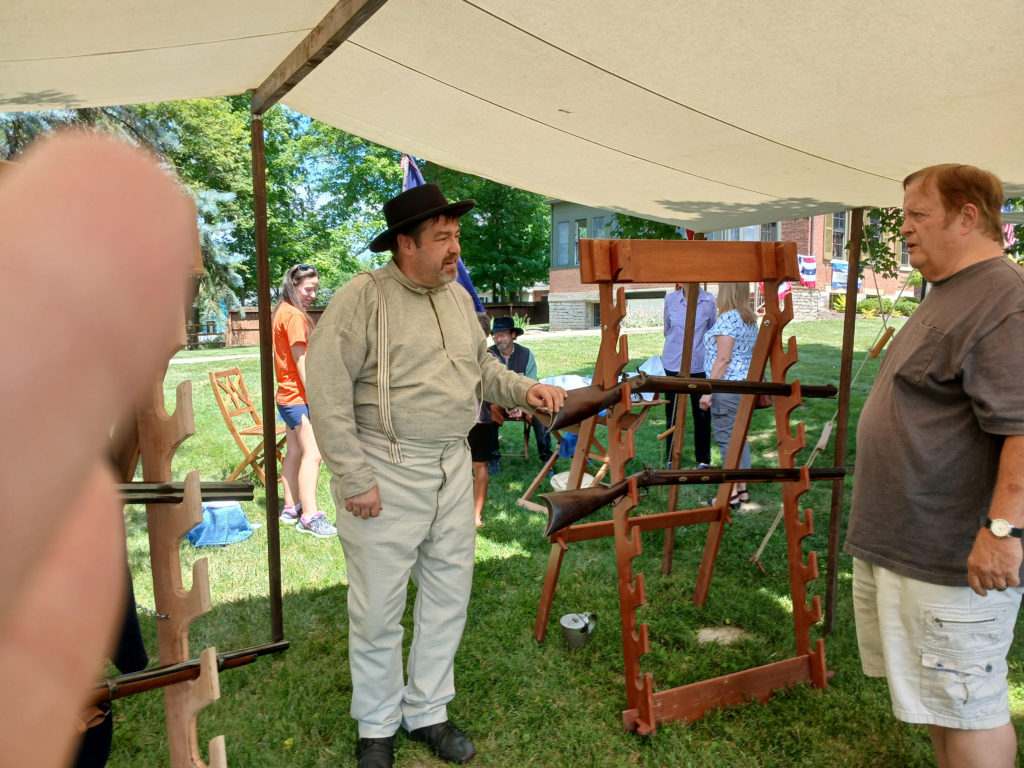
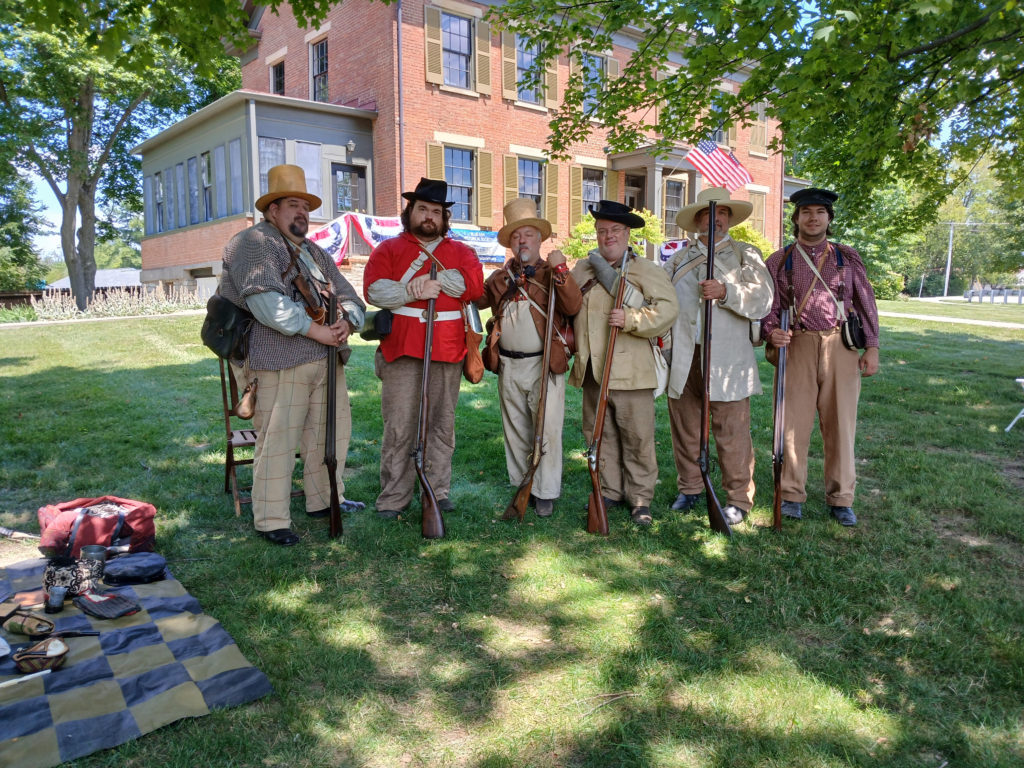
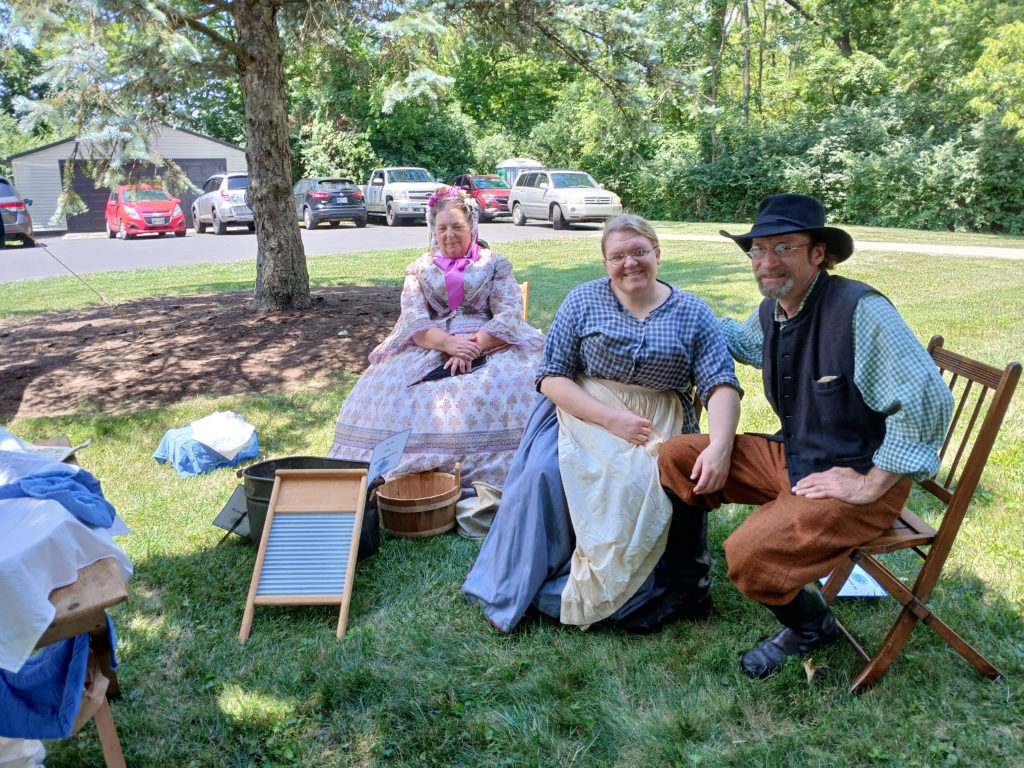
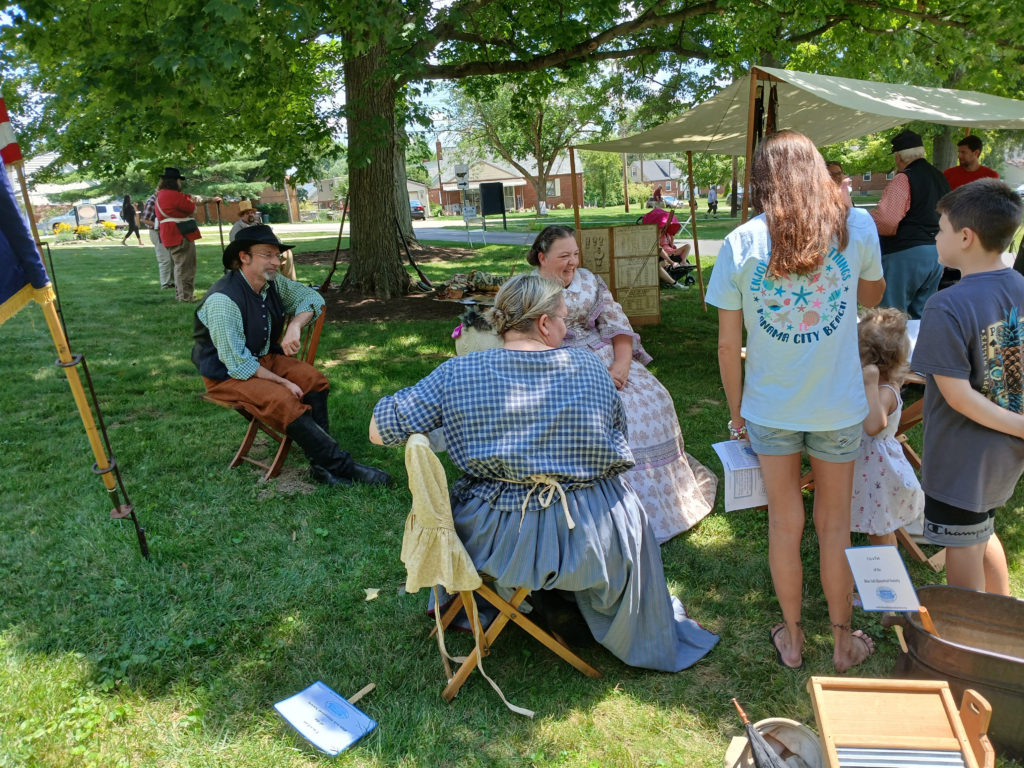
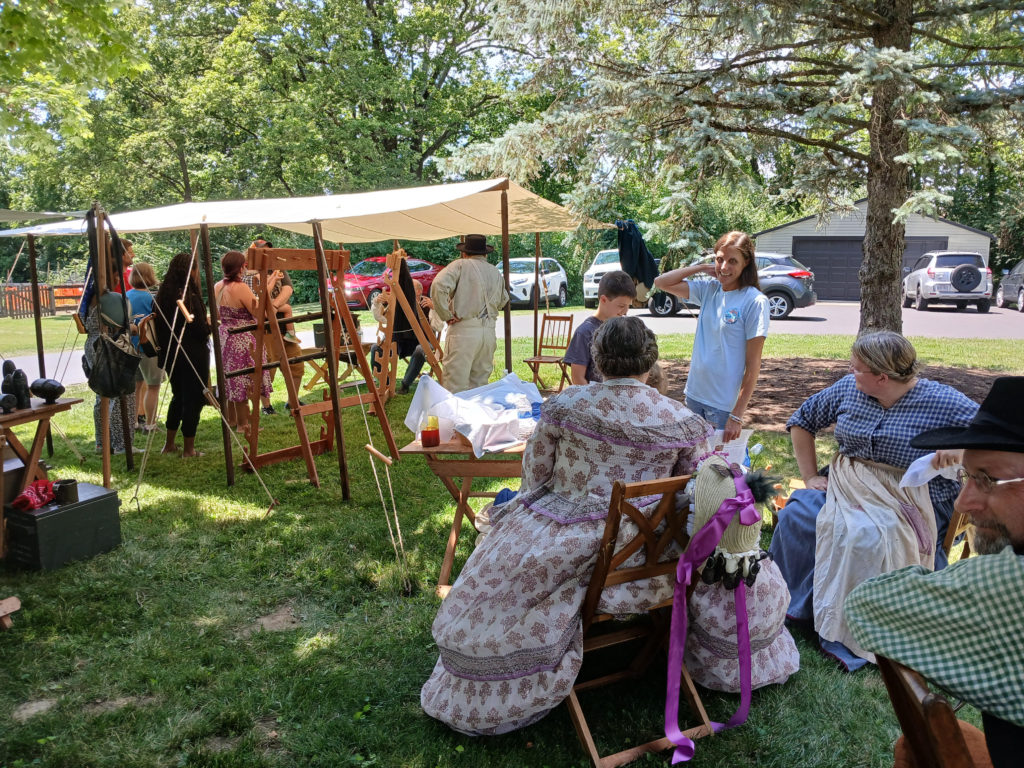
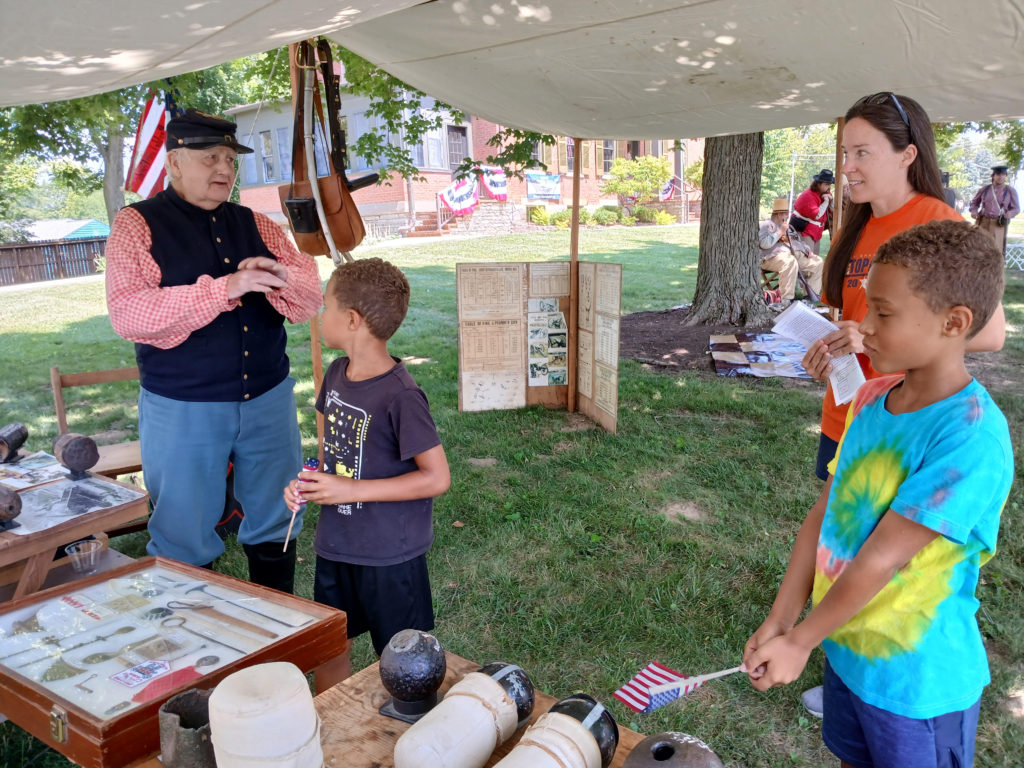
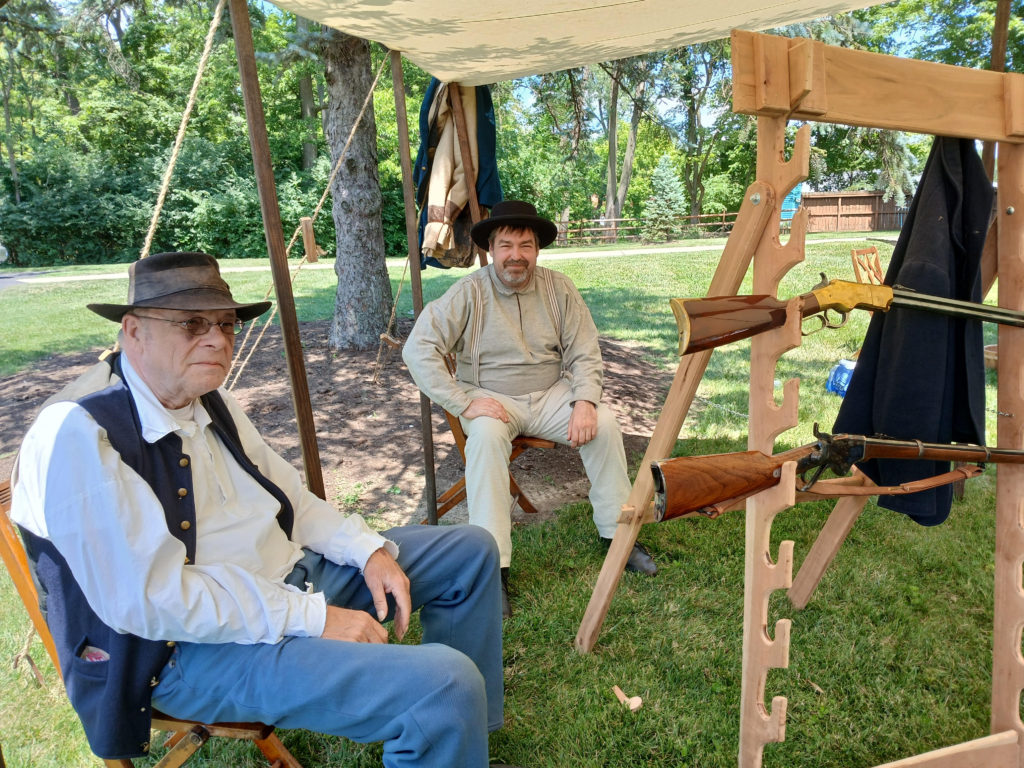
We trimmed the tree and decked the halls, the windows, the parlor,
the staircase, the fireplaces and mantels, and anywhere else
we could find to hang lights and ornaments!
We welcomed guests to the finale of a very busy year, and we look forwward to seeing old and new friends in 2024. Before we move on, one more look at a Victorian Christmas.
We thank Lisa Egan for reading The Night Before Christmas to the delight of our young guests and all guests who enjoyed the story of their childhood. The story by Clement Clarke Moore is 200 years old.
We want to thank the Young Professionals Choral Collaborative for their festive reditions of many seasonal pieces. They performed for three hours, outside and in the parlor.


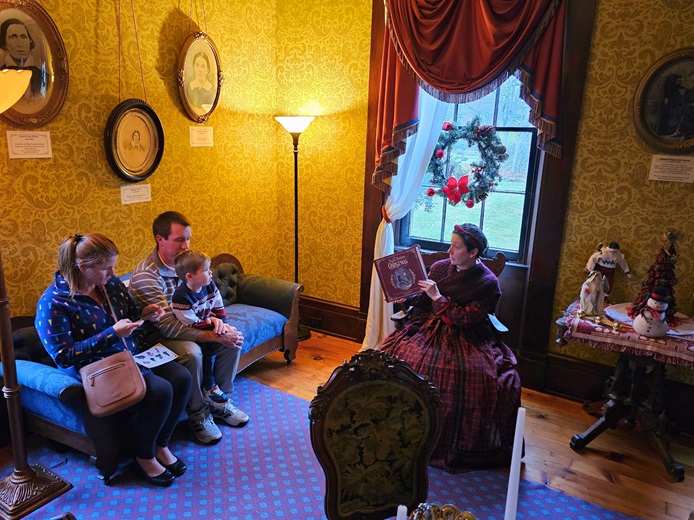
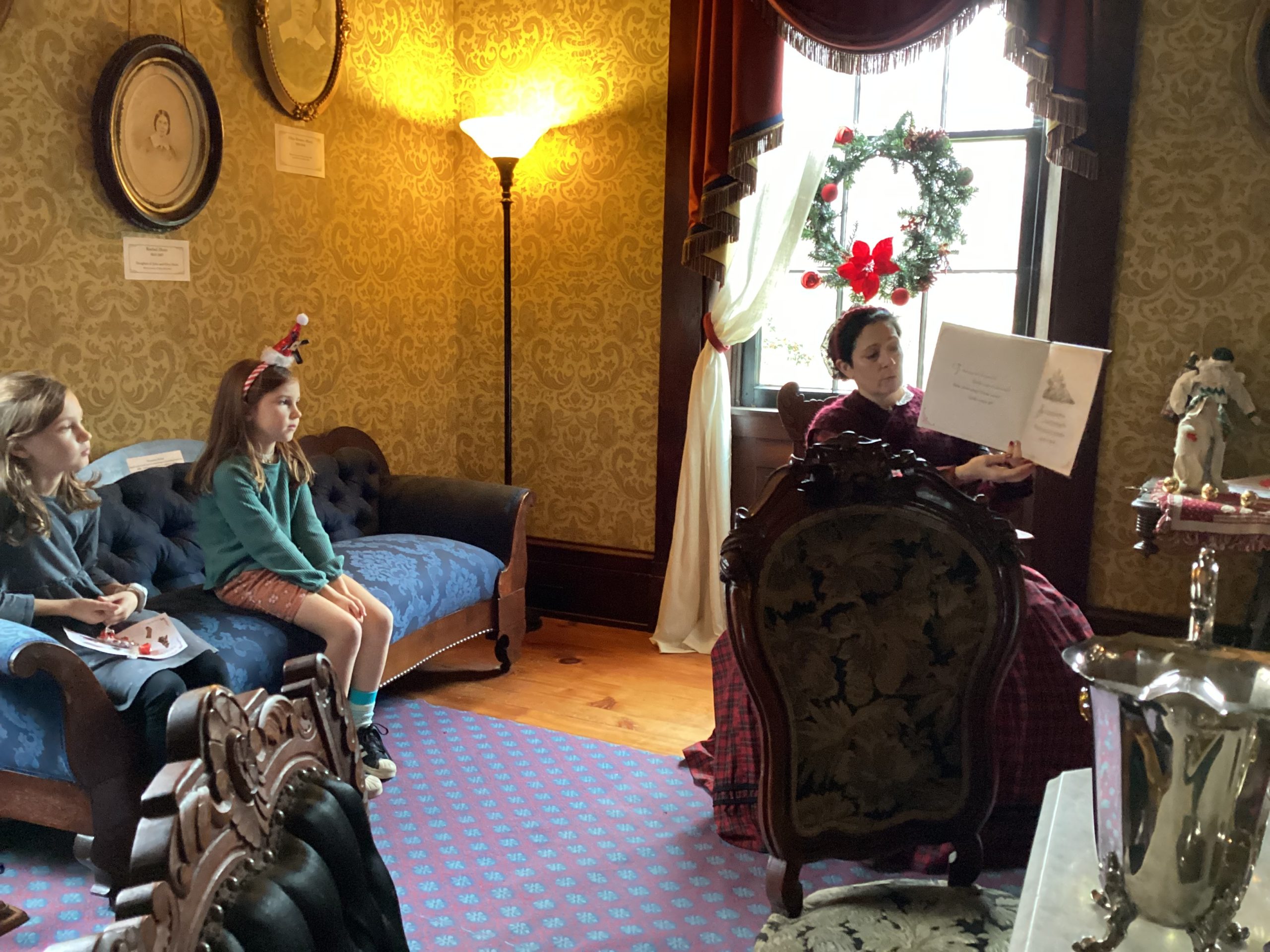
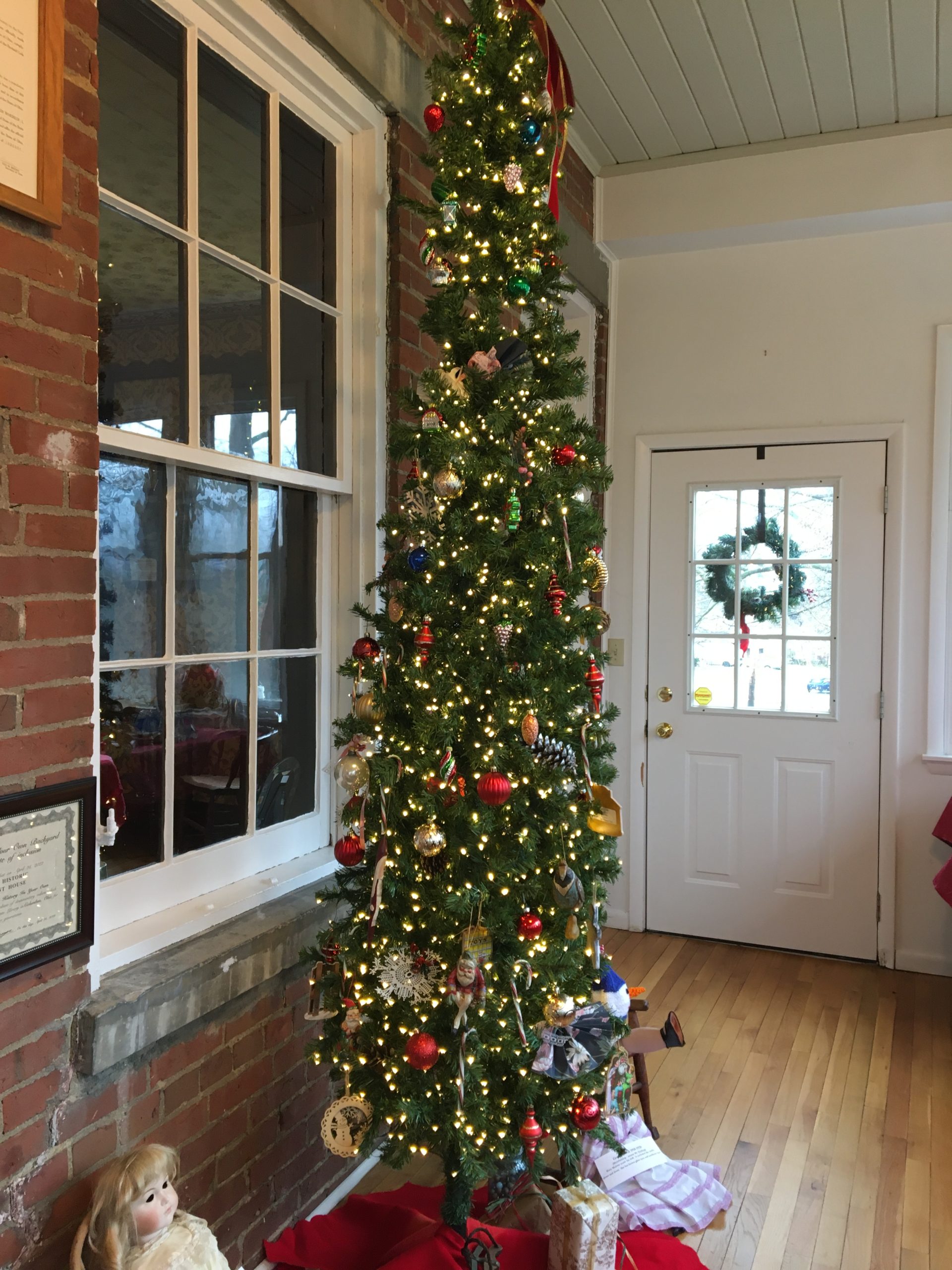

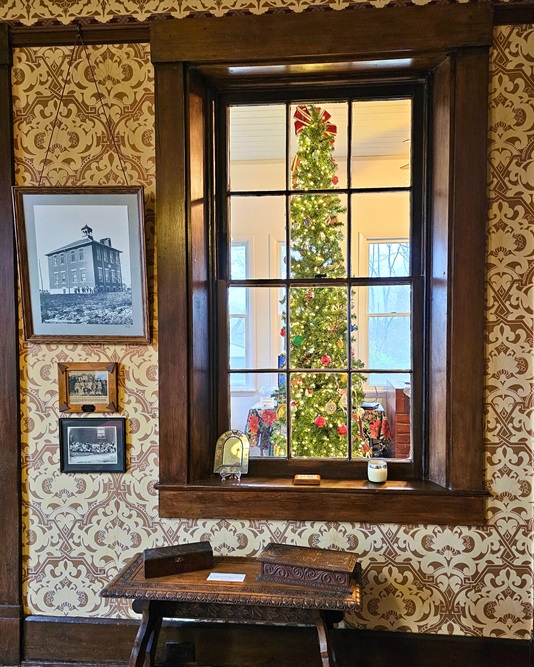

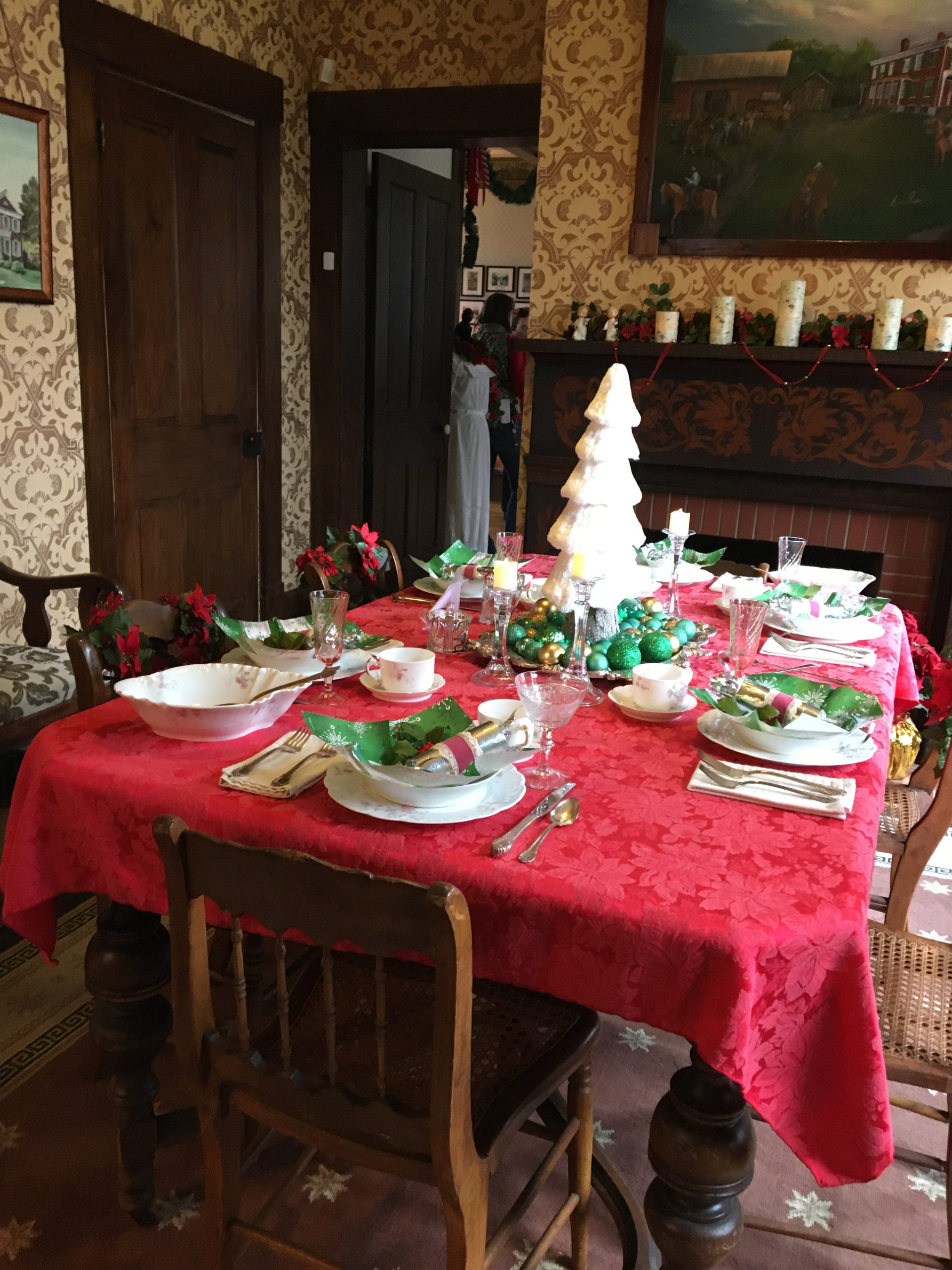
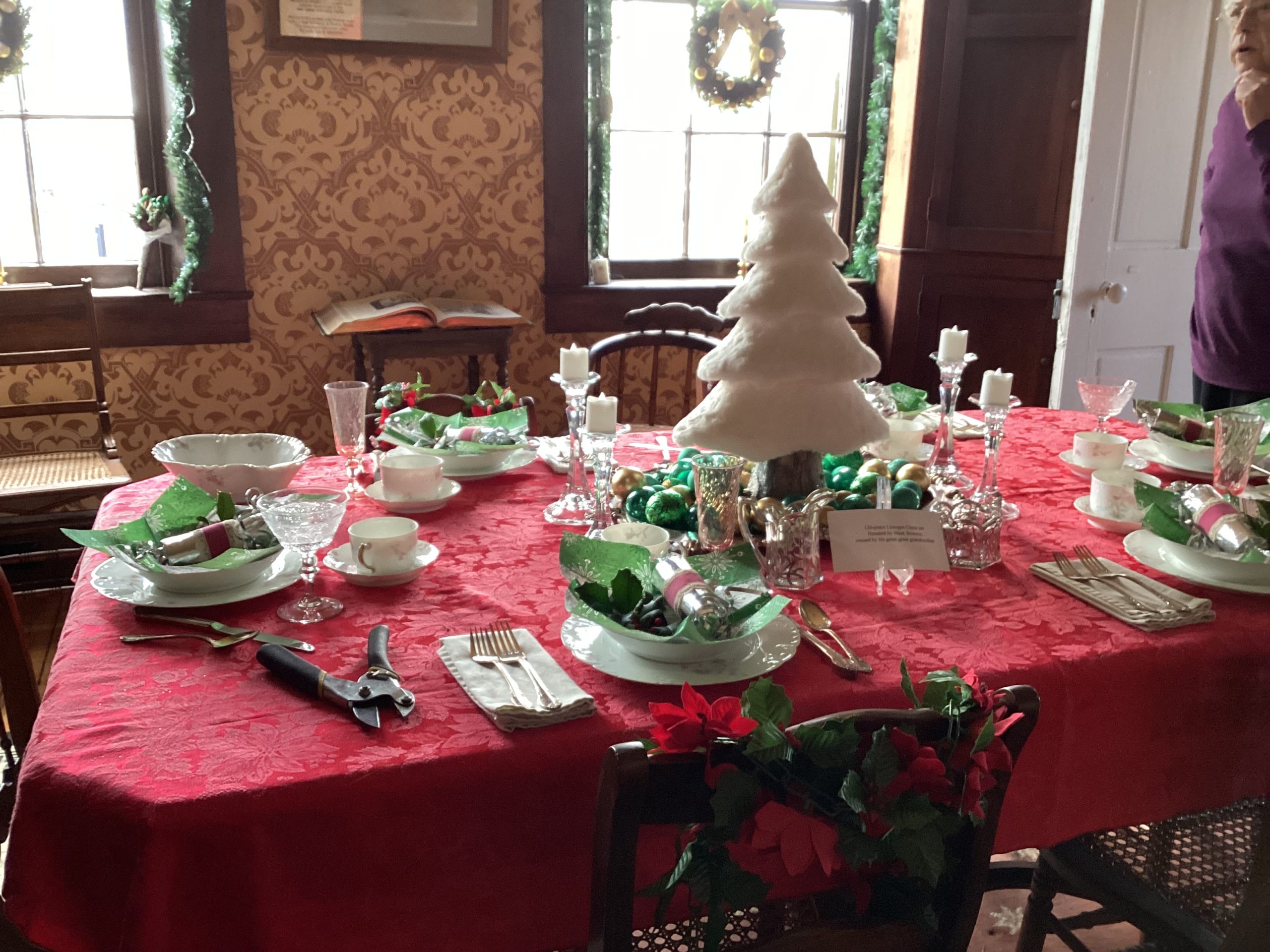

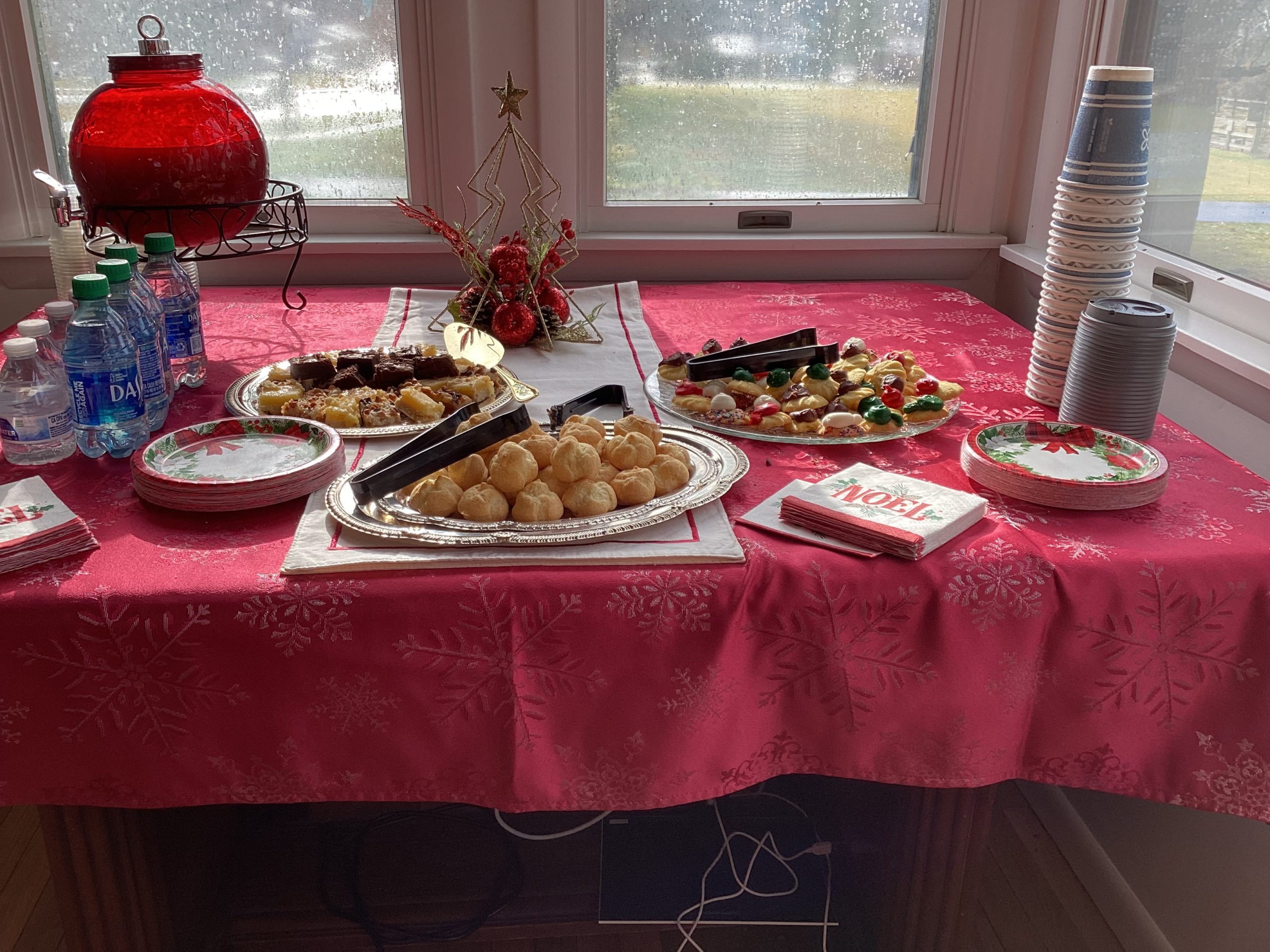
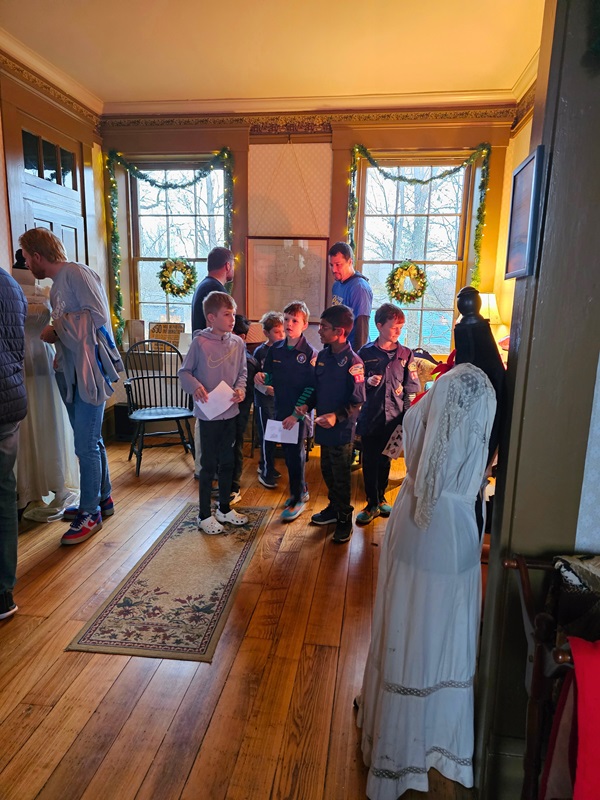
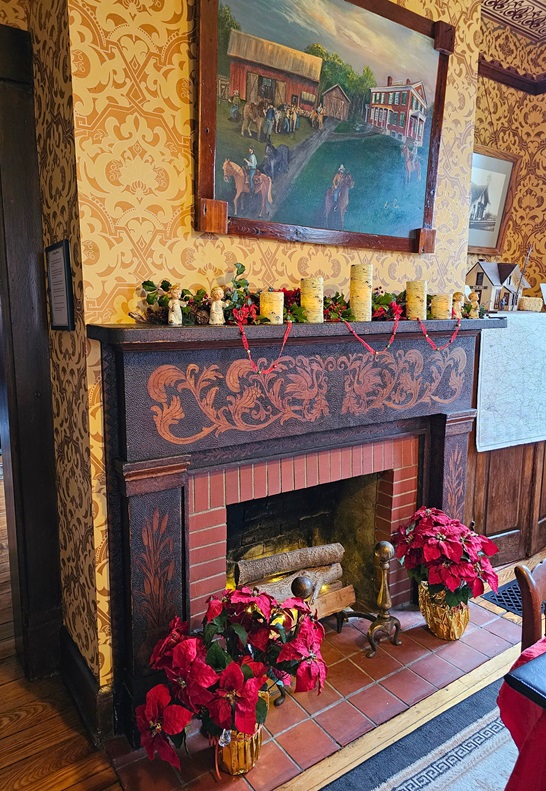
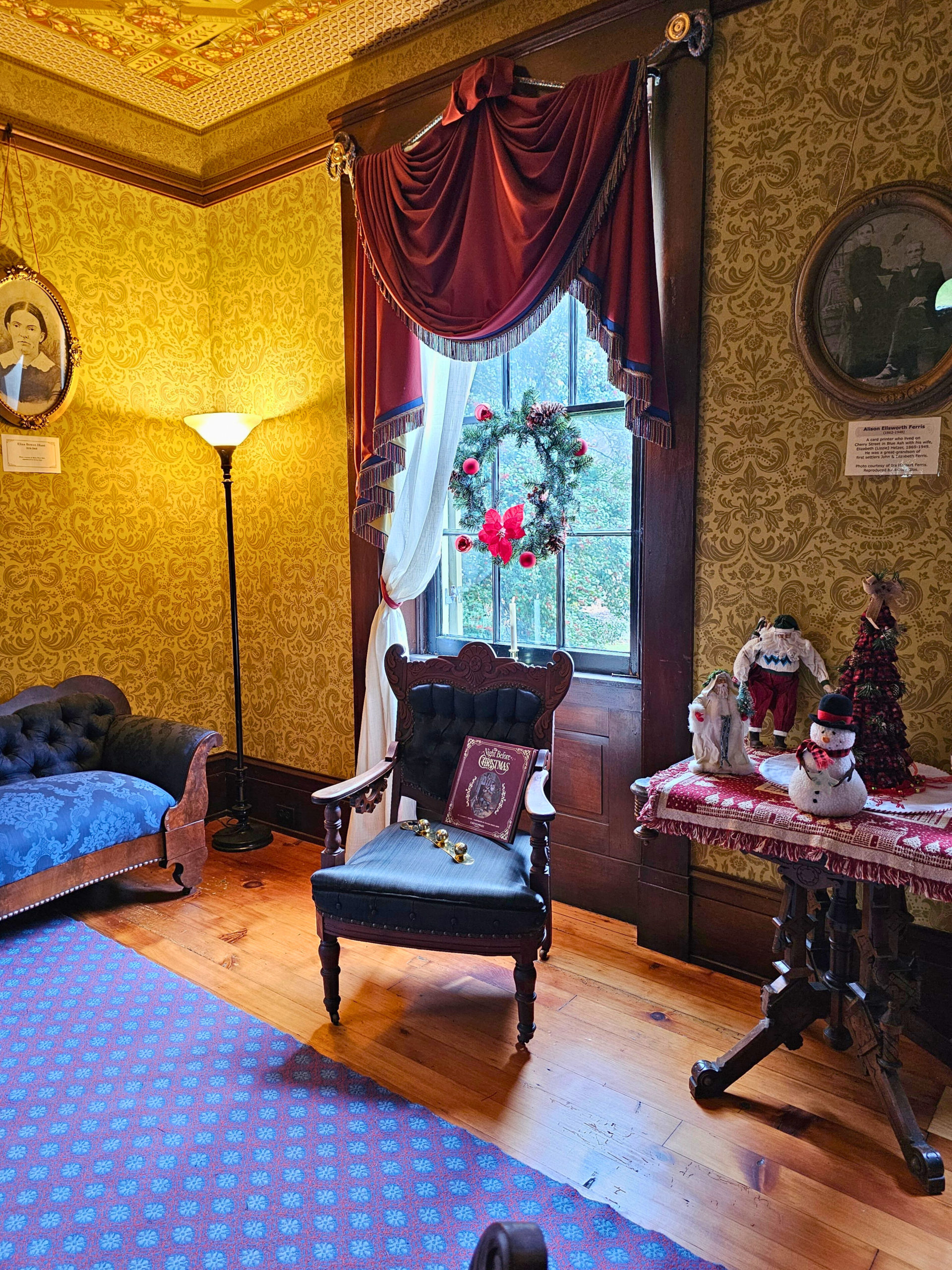
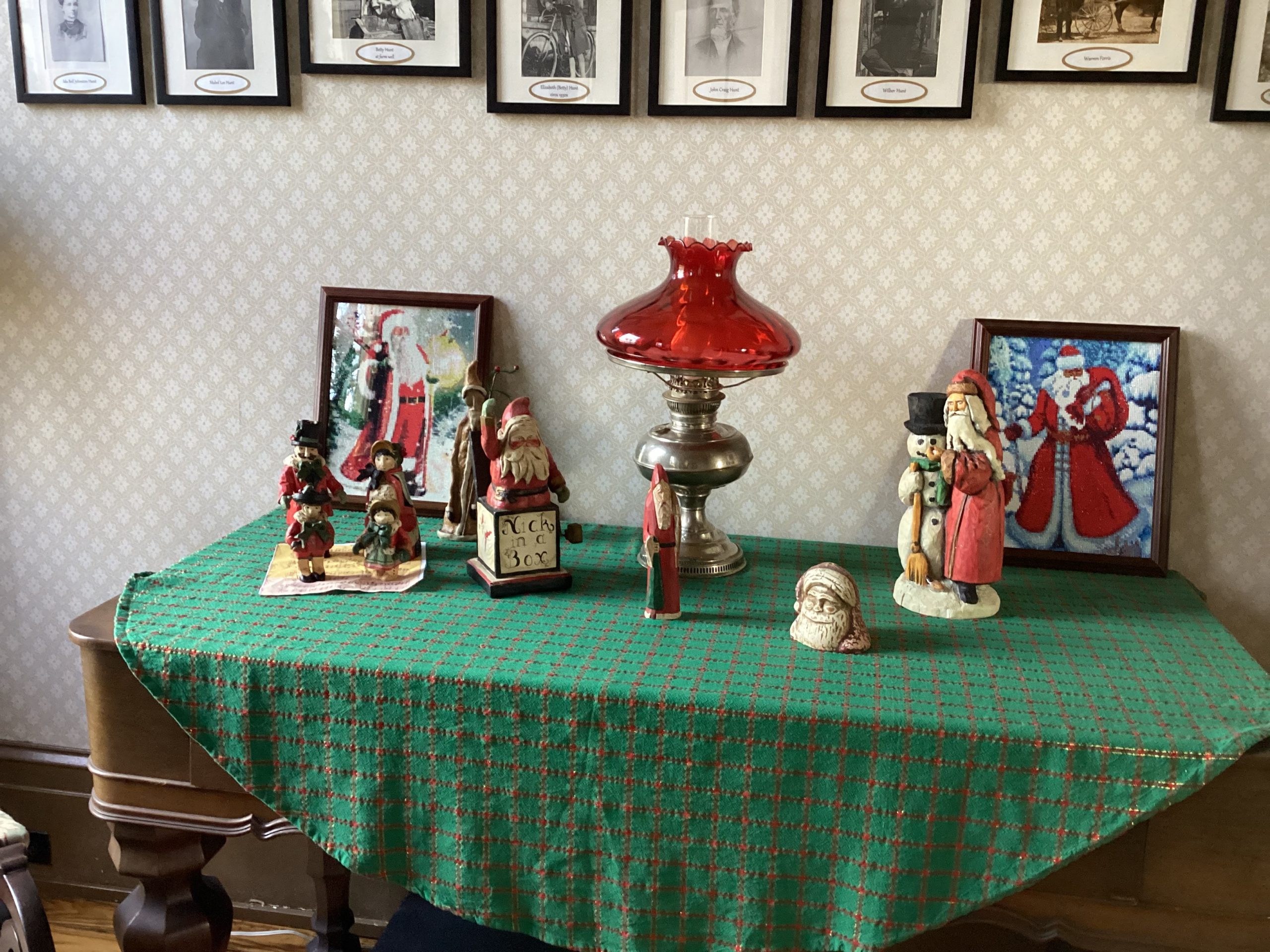
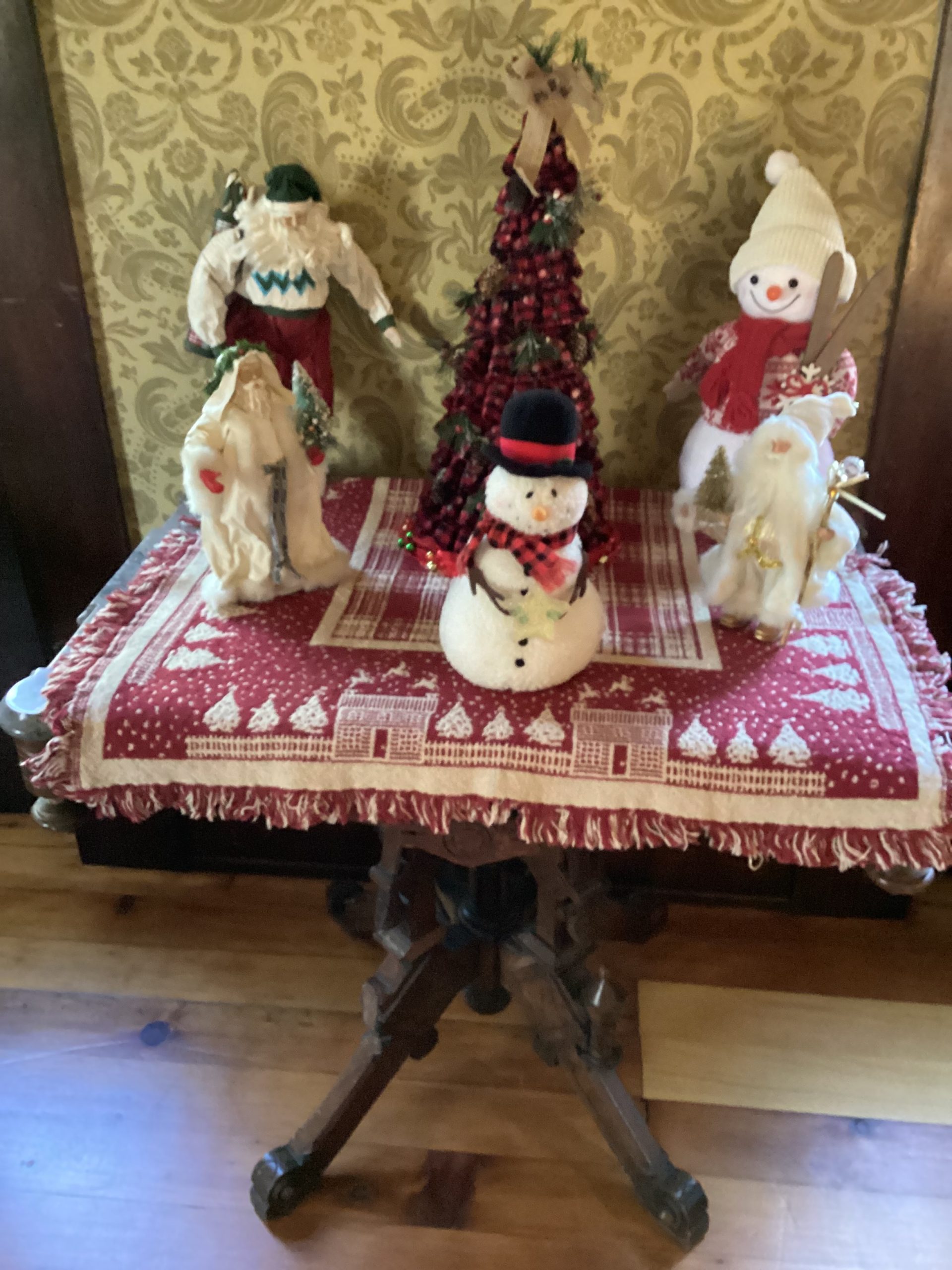
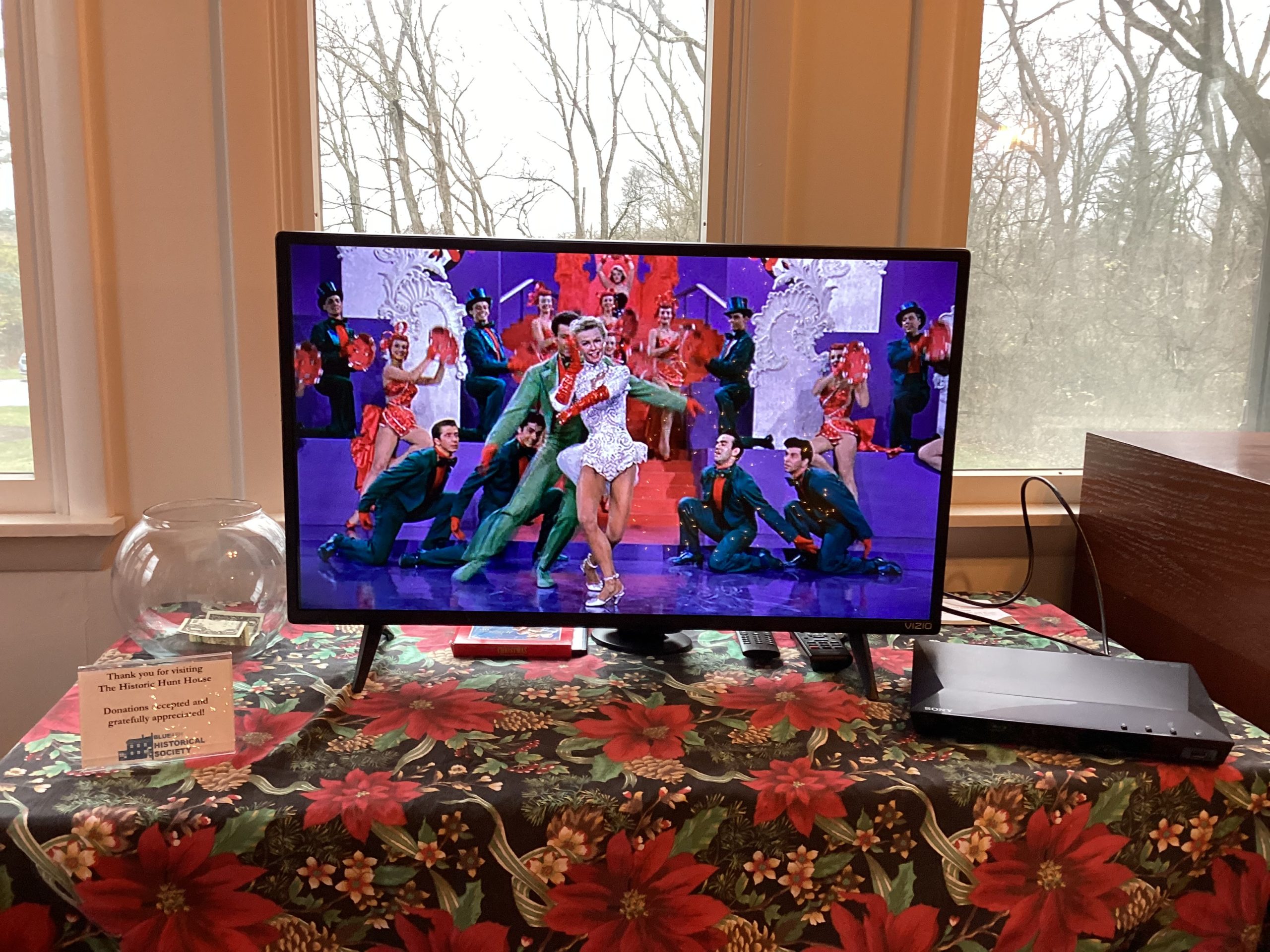
Saturday, October 28, 1:00-4:00
It’s harvest time on the Hunt farm—see the authentic farm equipment and tools that were used by the Hunts through the years. Also, Halloween crafts for the kids and other special treats and surprises!
Saturday, December 9, 1:00-4:00
Victorian Christmas at the Hunt House. Holiday treats, music, and fun for all ages.
Many thanks and much appreciation to Dana Gagnon for her enlightening and informative portayal of Harriet Beecher Stowe at the Hunt House on July 15, 2023. We appreciate her presence for over three hours, which gave us time to interact and ask questions. It was as if we were transported to the 1800s.
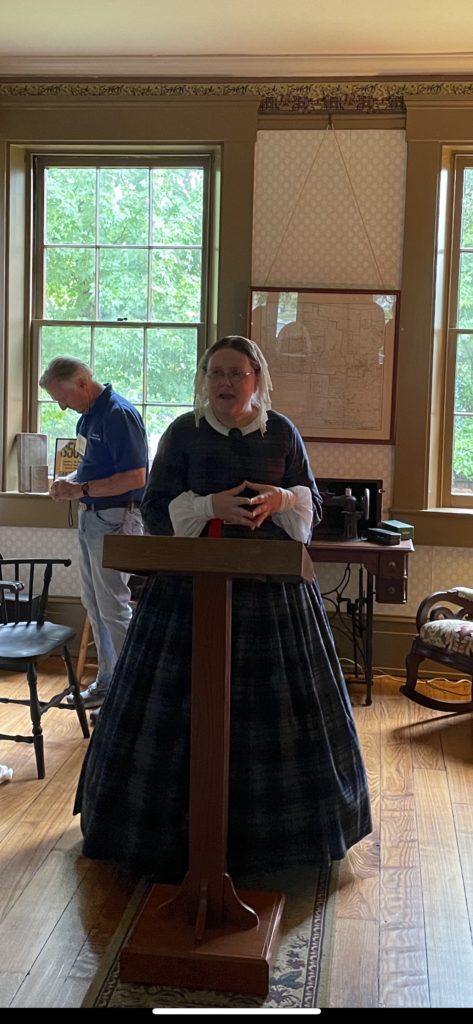
Following is an adaptation of the PowerPoint shown on July 15.
The early pioneers were mostly from the East Coast and of British descent. Cincinnati was a destination for German and Irish immigrants beginning in the 1830s and 1840s. Cincinnati was on the road to freedom for runaway and freed slaves and home to abolitionist Harriet Beecher Stowe.
In the 1850s, Cincinnati was nearly four times the size of Chicago and the Midwest leader in manufacturing and commerce.
Known as Porkopolis, Cincinnati was responsible for a quarter of the hogs slaughtered in the United States and about the same number of cattle.
Industries spun off the pork packaging industry—
Barrel making
Boots and shoes
Harnesses
Tanneries
Mattresses
Soap and candles
And second to the pork industry was the Eagle Iron Works, the company of Miles Greenwood which became the second largest in the West.
Made by Eagle Works—
Sash weights
Shutter lifts and catches
Pulleys
Teakettles
Tailor sheers
Machine castings
Munitions for war
Cincinnati was a hub for Southern goods and produce. The Miami and Erie Canal ran through downtown Cincinnati and connected Cincinnati to the Great Lakes.

John Craig Hunt was a gentleman farmer who transported his produce by flatboat downriver to markets along the Ohio and Mississippi Rivers. He was also an agent for other farmers. Produce demanded higher prices in southern markets.
“Cincinnati was home to six major publishers, 43 book stores, and nearly 4000 print publications.” The Good Country by Jon K. Lauck
Inspired by the Fugitive Slave Act of 1850 and the loss of a child, Harriet Beecher Stowe wrote Uncle Tom’s Cabin. This book became a best seller. However, there was worry from laborers about the competition for jobs with former slaves. Race riots in Cincinnati broke out in 1829, 1836, and 1841.


Cincinnatians also worried about a loss of southern markets in the event of war. And then Confederates opened fire on Ft. Sumter on April 12, 1861, and Cincinnati mobilized for war.
The Ohio Second Regiment, the Ohio Ninth Regiment, and the Ohio Tenth Regiment were formed. Those not in a regiment formed home guards to protect Cincinnati. Camp Dennison was a training camp, a hospital, a protector from an attack on Cincinnati, and a mustering out camp after the war.
In the first 18 months of the Civil War, river trade collapsed, banks failed, farm produce gutted the markets, and there was poverty among the working class.
Confederate troops threatened Cincinnati in 1862, and Cincinnati was unprepared for a direct attack.
In the first 18 months of the Civil War, river trade collapsed, banks failed, farm produce gutted the markets, and there was poverty among the working class.Confederate troops threatened Cincinnati in 1862.
Confederate troops could not have occupied Cincinnati indefinitely, but they would have gained access to the 12 warehouses of boots and shoes. And the psychological victory would have been huge.

General Lewis Wallace commanded a force of 72,000 men from the city and rural “squirrel hunters.”
Earthwork defenses were constructed in Ft. Mitchell. Troops crossed the Ohio River on a pontoon bridge to Kentucky followed by a three mile march to Ft. Mitchell.
Meanwhile, officers were training “citizen defenders.” So many volunteers arrived in Cincinnati that Governor Todd requested that no more show up. The Confederate troops that numbered 10,000 were no match for the 72,000 Union soldiers and volunteers prepared to defend Cincinnati. The Confederates under General Heth retreated.
Squirrel hunters were treated so well in Cincinnati that they did not want to leave, so they were issued discharges and told to go home.
Vicksburg, May 18 to July 4, 1863
The siege of Vicksburg ended and gave control of the Mississippi River to the Union. Victory was won by Gen. Ulysses S. Grant.

What it meant for Cincinnati—
Renewed river traffic
War contracts
Return to good economic times
Gettysburg, July 1-July 3, 1863
What it meant for the war—
The Union victory dashed Confederate hopes for independence.
Morgan’s Raid began in Tennessee and covered 1000 miles from June 11 to July 26, 1863.
Its purpose was the draw Union troops back to Ohio. The Confederate cavalry led by General Morgan entered Ohio at Harrison on July 13 and moved so quickly that Union General Hobson was unable to get ahead of the Confederates.


July 14, 1863
Morgan’s hungry men visited every house within 1 ½ miles of the Hunt House. Gen. Morgan had breakfast at the Schenck house in Deer Park.
Both sides stole fresh horses, sometimes exchanging Kentucky thoroughbreds for work horses.
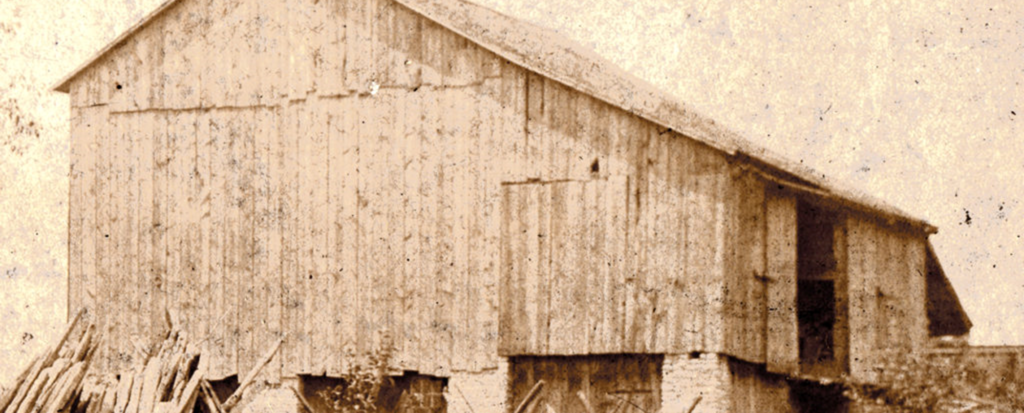
What it meant for the country—
This raid prolonged the war and suffering on both sides.
April 9, 1865—General Robert E. Lee, on the right, surrendered to General Ulysses S. Grant at Appomattox Court House.
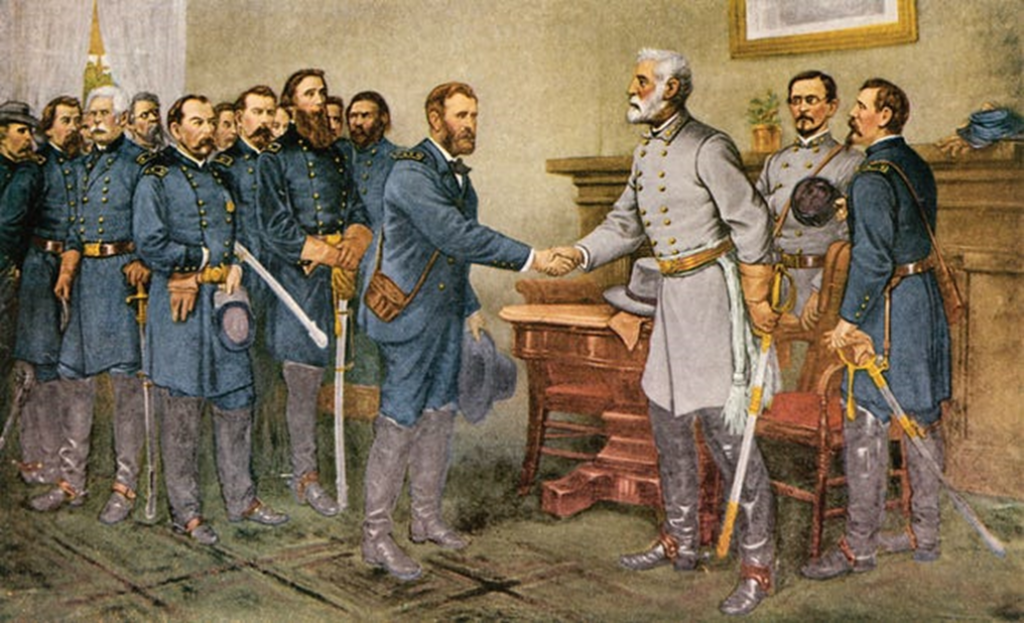
News reached Cincinnati at 9:30 pm. A downpour of rain could not stop Cincinnatians from celebrating with bonfires and fireworks.
The war ended, the president assassinated— President Lincoln’s funeral on April 19, 1865.
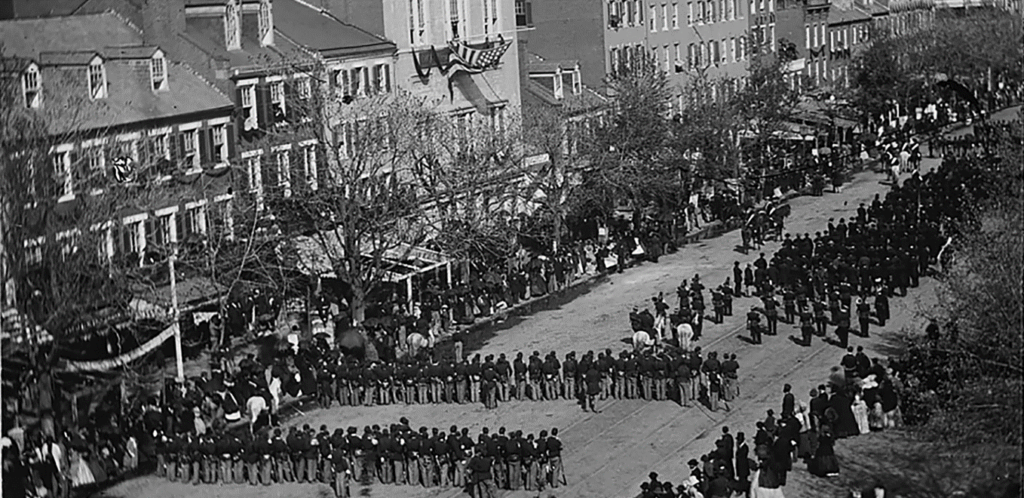
Sources:
Only in Your State
National Museum of American History
Photos offered free from various Internet sites
Cincinnati the Queen City
Morgan’s Raid by David Mowery
The Good Country by Jon K. Lauck
Rising Tide by Davis Dyer, Frederick Dalzell, and Rowena Olegario
This is the story of Mary Craig, the grandmother of John Craig Hunt, and the journey that brought her to the Ohio Country in 1788 when she and her husband, James Carpenter, were caught up in the excitement over emigration to Ohio. Her life story is one of courage and conviction. First, a look at her life leading up to the frontier of Southwestern Ohio.
John Craig, his wife, and their eldest child, Jane, set sail from Scotland. Their second child, Mary Craig, was born circa 1765 on the voyage to America. The family settled in New York, and a son, John Craig, was born. Mary’s father died not long after their arrival.
Mary’s mother worried about her family’s safety as the British began the seven year occupation of New York City. She renewed her acquaintance with a gentleman she had known in Scotland, who was now an officer in the British Navy or the British Army. She and Alexander Fergeson were married.
Ten year old Mary sided with the Patriots and moved to the home of Dr. Halstead in Elizabethtown, New Jersey. Mary assisted Dr. Halstead as the wounded soldiers were brought to his house, which served as a hospital. Mary bravely protected property in Elizabethtown from the British and once had a sword drawn on her. She stood her ground, trusting that her young age would protect her.
Mary witnessed General George Washington marching to New York and strewed flowers on the road as he passed by.
Mary’s sister married an Englishman and moved to England. Mary’s mother and stepfather, along with her brother and half-sister, relocated to Nova Scotia.
James Carpenter and Mary Craig were married in 1787 and joined John Cleves Symmes on the journey over the Allegheny Mountains and down the Ohio River to Columbia, five miles upriver from present day downtown Cincinnati. The frontier in 1788 was protected by only 600 soldiers. Native Americans did not welcome the settlers.
A blockhouse and log cabins were constructed. Sadly, James Carpenter succumbed to the strenuous work of building a cabin for his young family, leaving Mary and his daughters Hannah and Rebecca.
For fifteen months, Mary Craig Carpenter shunned the sometimes rough language and behavior she found “repulsive” in the blockhouse and chose to live “several hundred yards from the blockhouse.” Her children slept in the cellar underneath the floor of their cabin while their mother sat up every night to watch for Indians. She used this time to knit or do house work that could be done in the dim light of embers.
One night, as Mary succumbed to sleep, her dog slept by the door and awakened her with a growl. She gathered her babies and raced toward the blockhouse. She was spotted by a guard in the Fort Washington tower, and soldiers were summoned.
Francis Dunlevy, a young teacher at Columbia, was smitten by the brave young mother.
Judge Francis Dunlevy had served in numerous Indian campaigns and arrived at Columbia in 1792. He had a classical education, and he excelled in advanced math. He taught in the school in Columbia, which was one of the first in the Northwest Territory.
Francis Dunlevy and Mary Craig Carpenter were married in January of 1793. They had six children who lived to adulthood. Francis Dunlevy served in the legislature and at the Ohio Constitutional Convention in 1802. He was the presiding judge in the Court of Common Pleas.
Mary’s daughter Hannah married Isaac Hunt in 1808 and settled on the land her father had purchased from John Cleves Symmes.
Moving to the Ohio Country meant one might never again see family. However, a letter addressed to Mary “in the Miami country” arrived.
Mary’s brother had returned to the United States from Nova Scotia. Mary’s sister returned to New York from Liverpool, England, to reconnect with Mary and their brother. Mary’s sister learned their brother John Craig* had died that same year, 1806, and her sister was in the “far West.” The sister refused to enter “Indian country” and arranged to meet Mary in Pittsburgh. Sadly, the sister contracted and died of yellow fever while in New York.
Mary died in 1828, her heart broken by the deaths of adult children, one of whom was Hannah who died after the birth of her twelfth child. The Hunt House was built circa 1860 by Hannah’s son John Craig Hunt. The house remained in the family until it was sold to Blue Ash in 2003.
This information is adapted from Hunt family papers archived with the Blue Ash Historical Society.
*The letter from N. H. Dunlevy dated December 9, 1851 relates the following about Mary’s brother:
“From Nova Scottia, John Craig and both the Fergusons, father and son, about 1800 returned to northern New York State…John Craig married a Mis [sic] Runsom, bought a large tract of land on the shore of Lake Champlain, was busily and profitable [sic] engaged in rafting lumber down Lake Champlain in the St. Lawrence and thence to Quebec. But in a storm in 1806 wa drowned leaving wife and one child.”
From this same letter, it appears the mother of Mary Craig Carpenter Dunlevy died in New York prior to the family’s move to Nova Scotia. Mr. Ferguson, John Craig, and the child she had with Mr. Ferguson relocated after the recapture of New York.
We are extremely grateful to the Cincinnati Public Library for preserving photos of places and people that tell the story of Blue Ash.
We are also indebted to those who have provided us with their family photos and stories. Click on the link to visit the website.
Included with the local Blue Ash collection are aerial photos of Cincinnati and other points of interest which were taken by photographers who flew out of the two Blue Ash Airports.
Mark your calendars for December 10, from 1-4 pm. The house will be decorated with many of the traditional greenery and ornaments associated with Christmas. We invite you to join us for refreshments, including hot wassail.
We are happy to welcome Lisa Egan as our special guest. She is a teacher and will have several readings for children and the young at heart during the afternoon. Her attire will be Victorian.
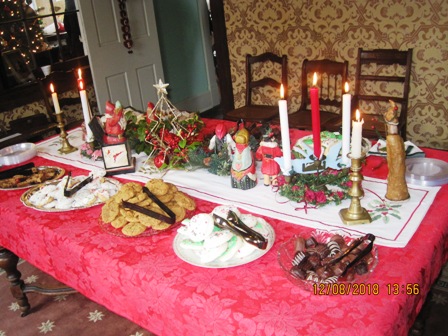
Do you wonder why we have poinsettias at Christmas? Do you wonder why Santa Claus’ “clothes were all tarnished with ashes and soot”? The following was shared with us, and we pass it along.
The Legend of the
Candy Cane
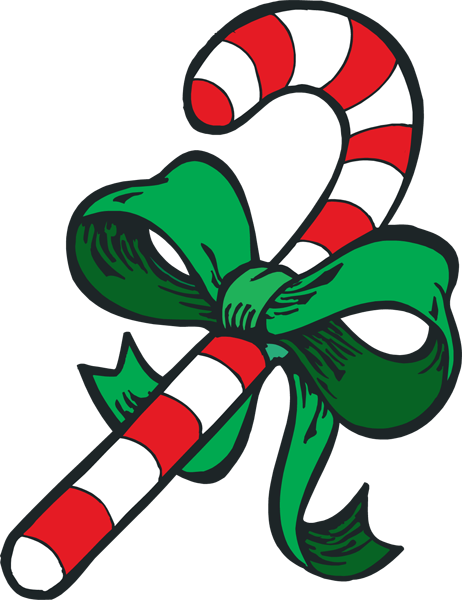
Honoring the birth of Christ was the original
inspiration for the traditional, highly symbolic
Christmas candy cane.
Upright, it’s a shepherd’s staff; upside down, it’s
the letter “J” for Jesus. White is for purity, while
the red stripes represent the blood of Christ. One
bold stripe is for belief in one God; the three fine
stripes represent the Holy Trinity.
Candy canes were first made in 1672, mentioned
in association with Christmas in 1874, and first
hung on trees in 1882. The earliest patent for a
candy cane machine was 1920.
Ivy

Ivy is a plant more closely
associated with Christmas in
England than in America. It is
considered to be a symbol of
eternal life. Christian symbolism relates ivy’s
need to cling to a support to man’s need for
divine support.
Christmas Cactus

A native of the South American
jungle, the Christmas cactus is a
popular seasonal plant. Its tendency to flower
just before the winter solstice makes it a natural
choice for holiday displays. Available in colors
from white to rich red to salmon to bright
fuschia, this plant will brighten the dreariest of
winter days.
Christmas Rose

Named for its tendency to bloom in late
December or early January, the Christmas rose is
not a true rose.
One story about this flower takes place in the
Goinge Forest of Sweden. It tells of a Christmas
Eve when an abbot and a skeptical monk walked
through the forest. Magically, all the trees were
in full leaf, all flowers were in bloom, and the
birds were singing. The doubting monk was
convinced that this was a work of evil. In return
for his skepticism, the miracle ended, and only
the Christmas roses were left in bloom.
Poinsettia

Called the “Flor de la Noche
Buena” in its native Mexico, this
“Flower of the Holy Night” was
brought to America over 100 years ago. It is
named for Dr. Joel Poinsett, our first ambassador
to Mexico.
One legend of this popular holiday plant
describes a poor peasant girl who left the church
on Christmas Eve, weeping because she had no
gift to lay on the altar for the Christ Child. An
angel appeared and told her that any gift, when
given with love, would be acceptable. She
gathered some weeds from the side of the road
and placed them on the alter. They were
transformed by miracle into the bright red
flowers of today.
Mistletoe

Almost everyone is familiar with
the custom of kissing under the
mistletoe. This practice has its roots in the myths
of Scandinavia. Legend says that the god Baldur
was killed by an arrow made from mistletoe. The
tears of his mother, Frigga, goddess of Love and
Beauty, became the white berries of the
mistletoe. Balder’s life was restored, and Frigga
is said to have kissed anyone who passed under
the mistletoe.
The Druids believe this plant could bestow health
and good fortune. In Wales, a good mistletoe
crop is said to foretell a good crop the following
season. In some parts of England, Christmas
mistletoe is burned on Twelfth Night, lest all the
boys and girls who kissed beneath it never get
married.
Holly

Holly is one of the oldest plants to be associated
with the holiday season. All over the world it is
steeped in tradition. In Germany, a sprig of holly
that has been used in a church decoration is
considered to protect against lightning. British
farmers put sprigs of holly on beehives because it
is believed on the first Christmas the bees
hummed in honor of the Christ Child. A sprig of
holly on a bedpost is said to bring sweet dreams.
St. Nicholas
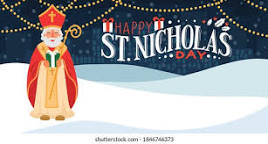
St. Nicholas is the gift-bearer for children.
The people of Germany believe that on the
night of December 5th, the eve of his feast
day, St. Nicholas goes from house to house
with his “Book of Sins.” For those children who
have been good throughout the year, gifts are left
in the shoe or boot that has been left by the
fireplace. For those who have not been so good,
they can expect to see a boot full of twigs.
The tradition of gift-giving is based on the story
in which he generously gave the entire
inheritance left him by his wealthy parents to the
poor and protected them from the cold and
hunger.
Shopping Mall Santas

Gift-giving has been an important
part of holiday celebrations.
Stores began to advertise Christmas
shopping in 1820, and by the 1840s
newspapers were creating separate sections for
holiday advertisements, which often featured
images of the newly-popular Santa Claus. In
1841 thousands of children visited a Philadelphia
shop to see a life-size Santa Claus model. It was
only a matter of time before stores begin to
attract children with the lure of a peek at a “live”
Santa Claus.

In the early 1880s, the Salvation Army needed
money to pay for the free Christmas meals they
provided to needy familues. They began dressing
up unemployed men in Santa Clause suits and
sending them into the streets of New York to
solicit donations. Those familiar Salvation Army
Santas have been ringing bells on street corners
ever since.
In 1822, Clement Clarke
Moore, an Episcopal
minister, wrote a long
Christmas poem for his three
daughters entitled “An
Account of a Visit from St. Nicholas.”
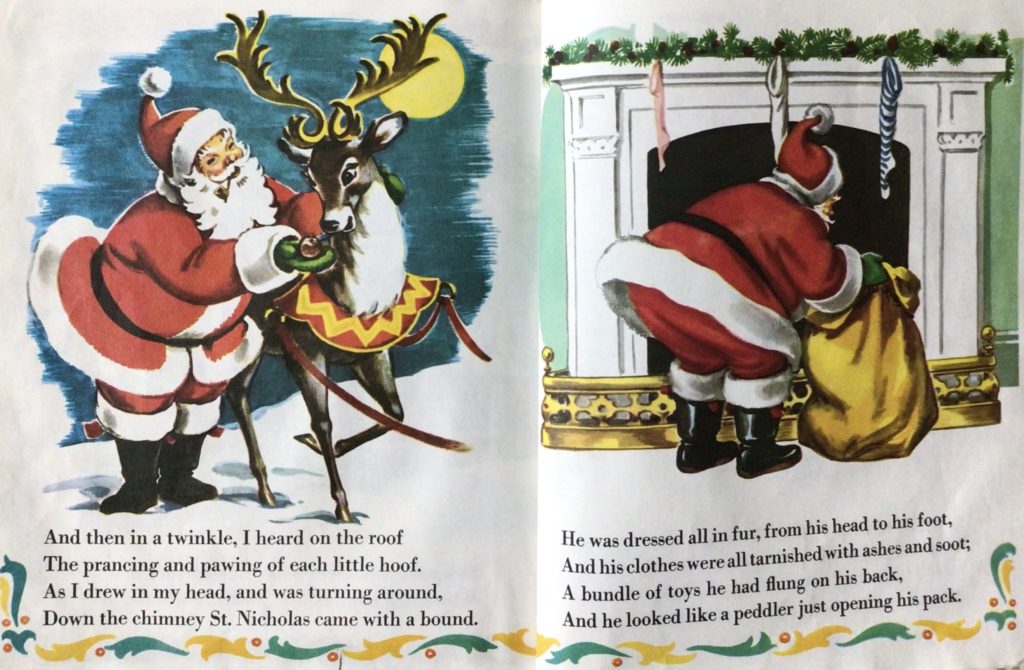
Moore’s poem, which he was initially hesitant to publish
due to the frivolous nature of the subject, is
largely responsible for our modern image of
Santa Claus as a “right jolly old elf” with a
portly figure and the supernatural ability to
ascend a chimney with a mere nod of his head
and fly from house to house in a sleigh led by
eight reindeer.
In 1881, political cartoonist Thomas Nast drew
on Moore’s poem to create the first likeness that
matches our modern image of Santa Claus.
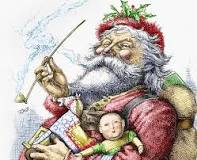
His cartoon depicted Santa as a rotund, cheerful man
with a full white beard, holding a sack laden with
toys for lucky children. It is Nast who gave
Santa his bright red suit trimmed with white fur,
a North Pole workshop, elves, and his wife, Mrs.
Claus.


